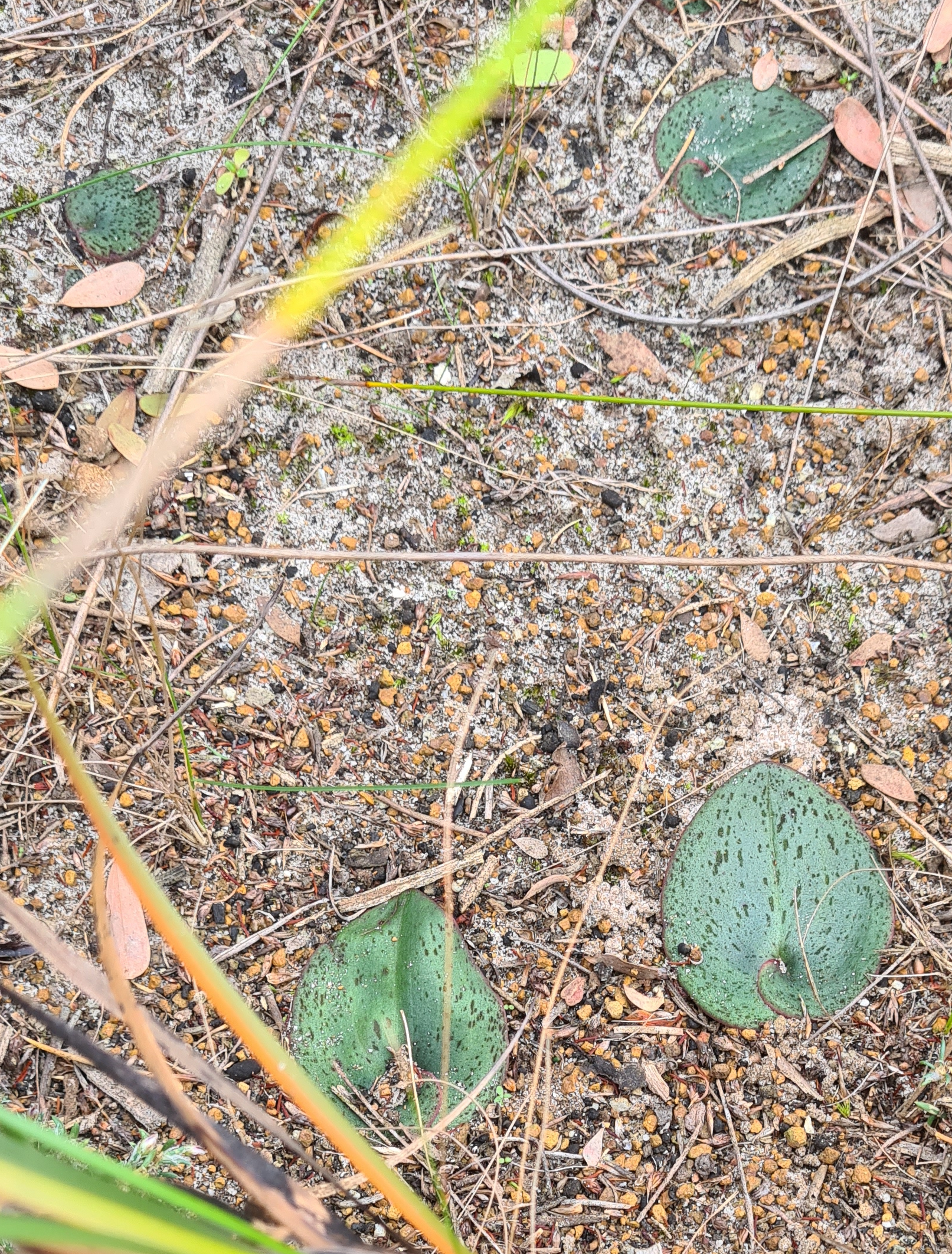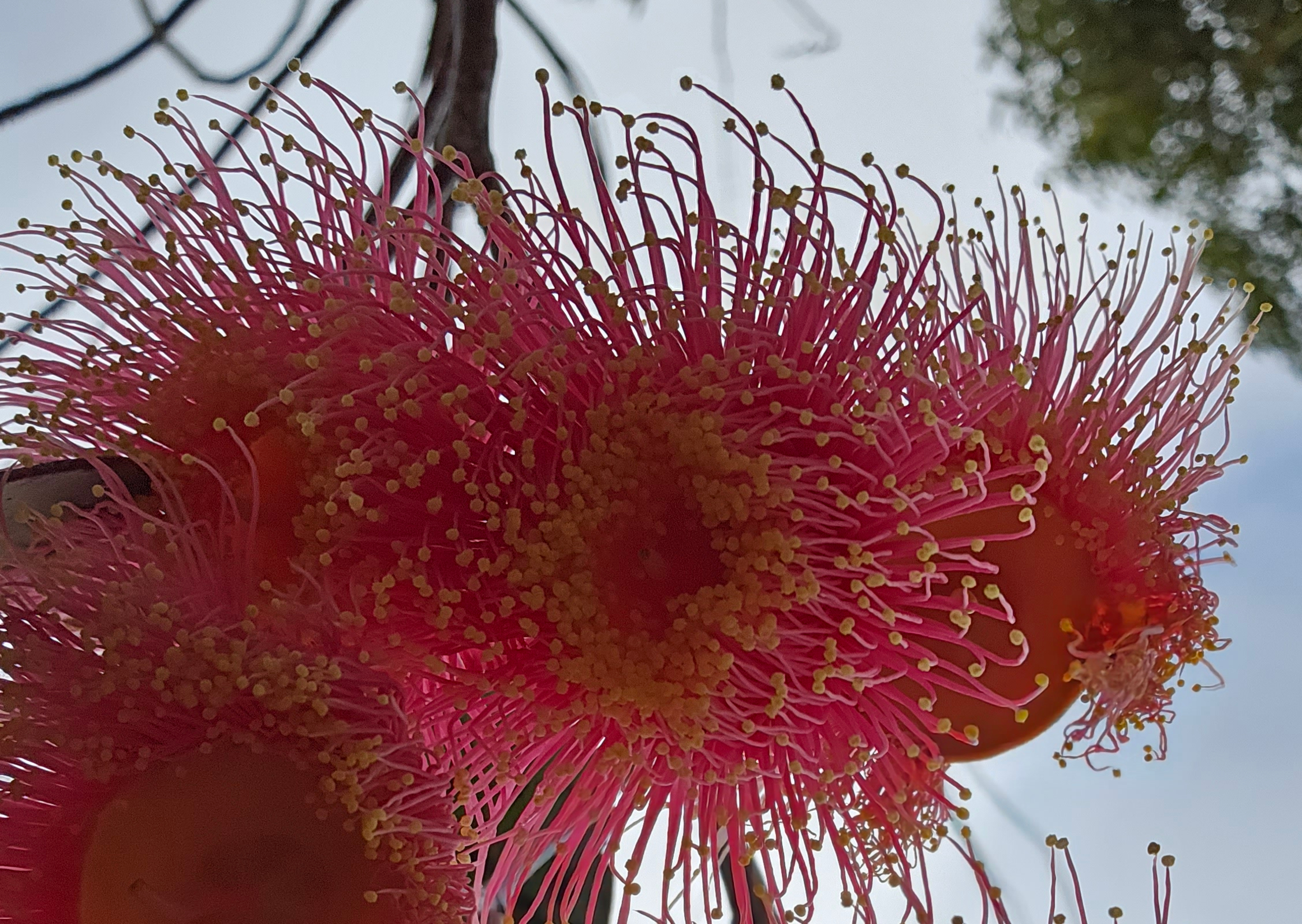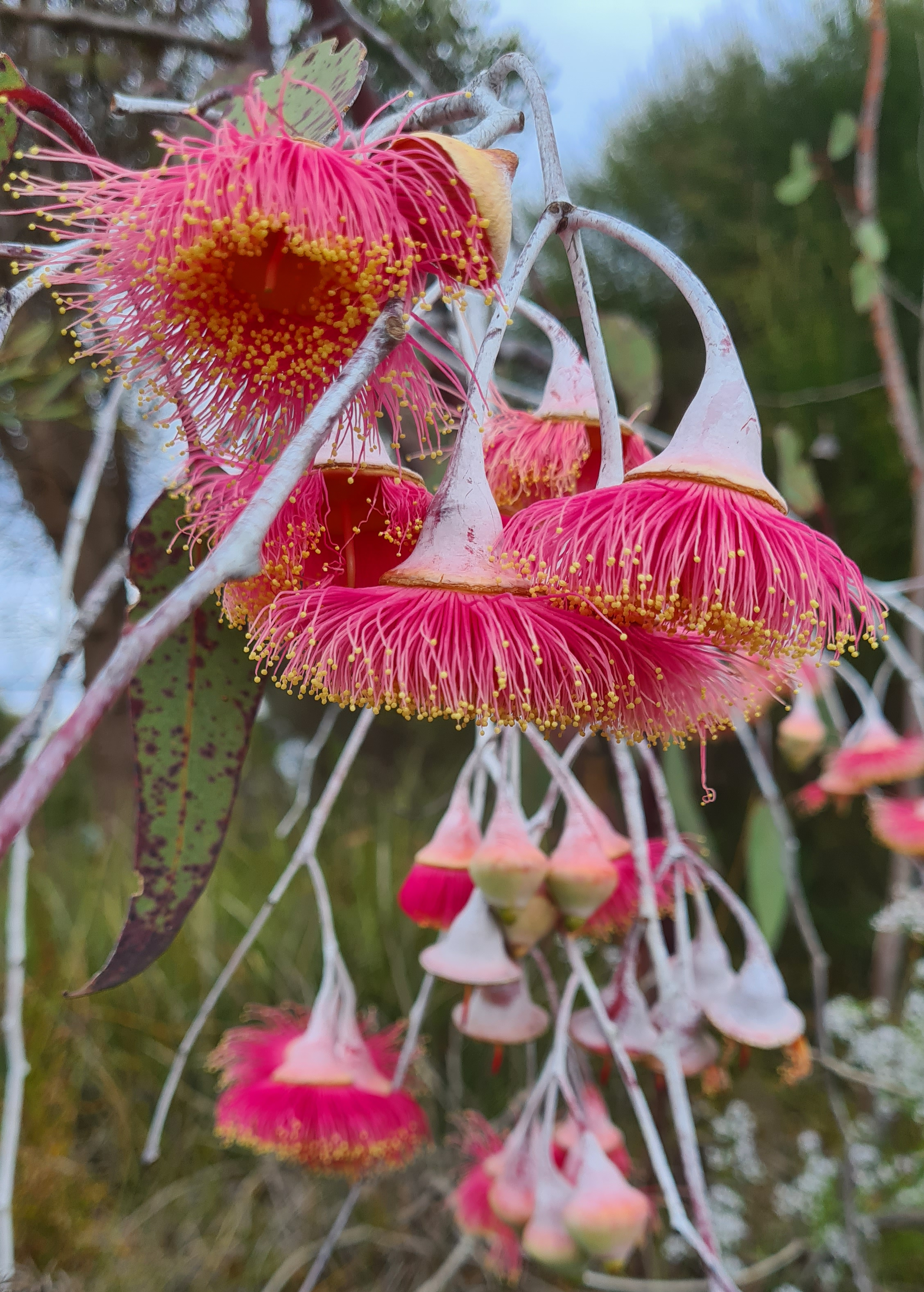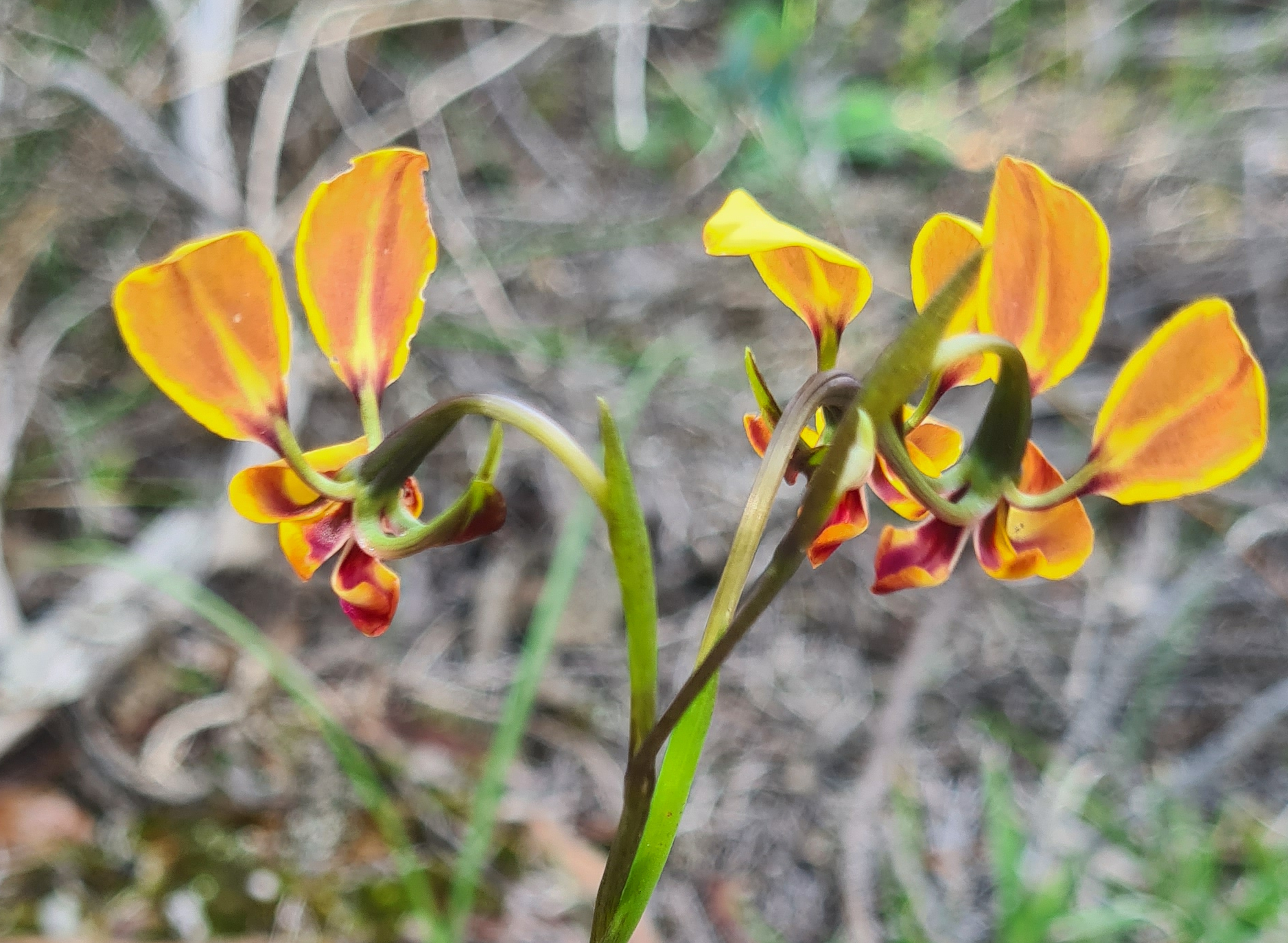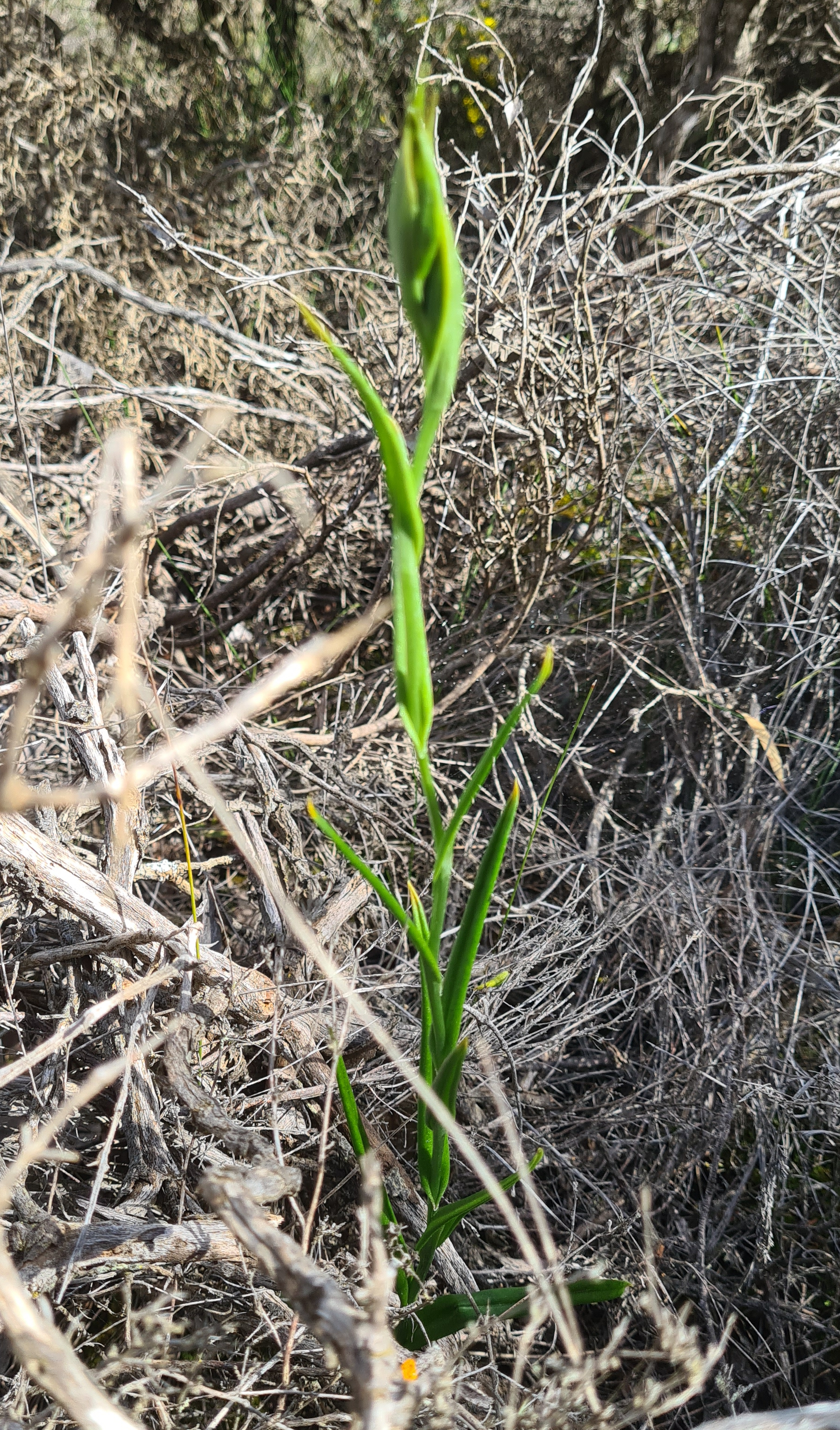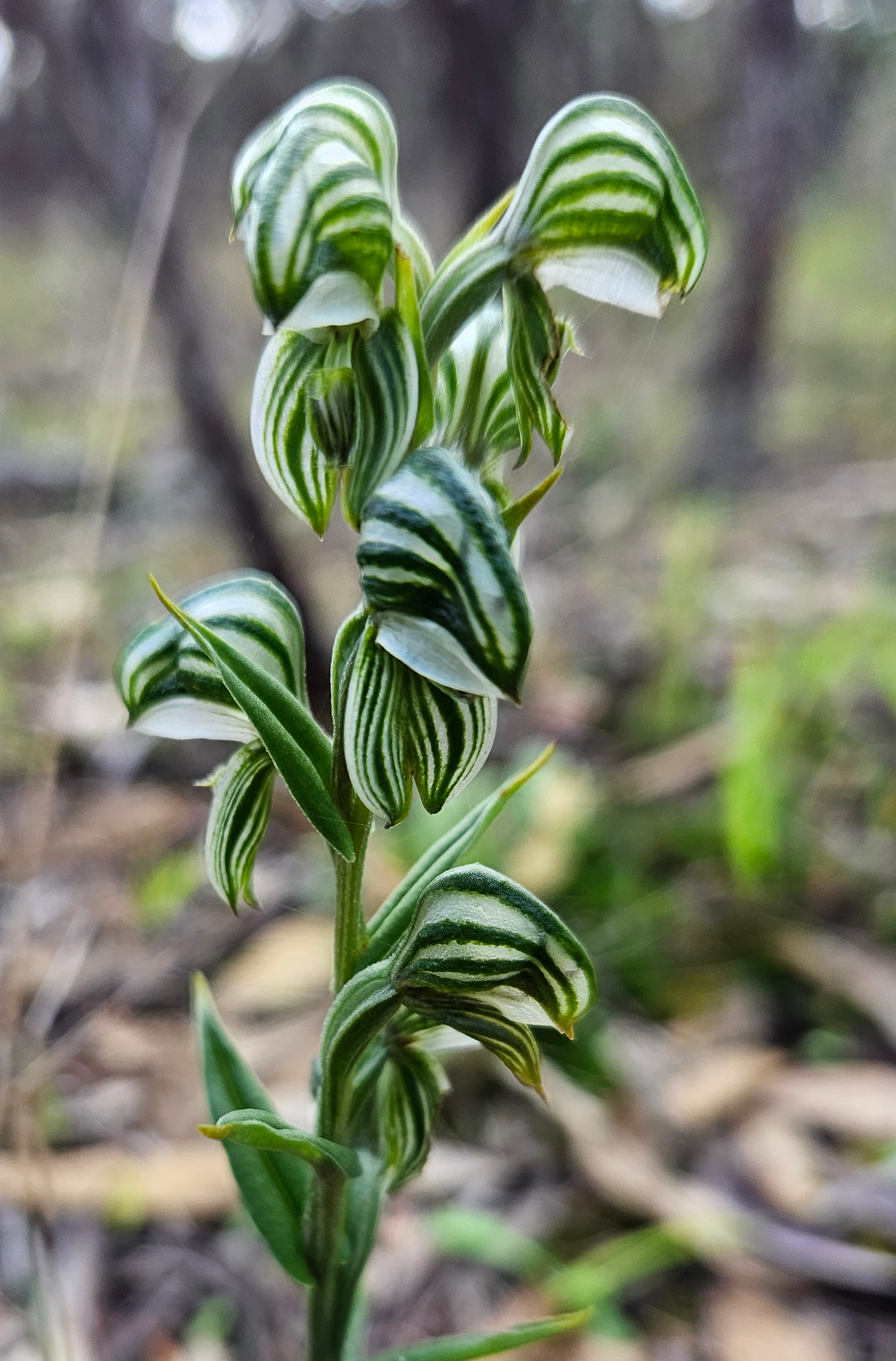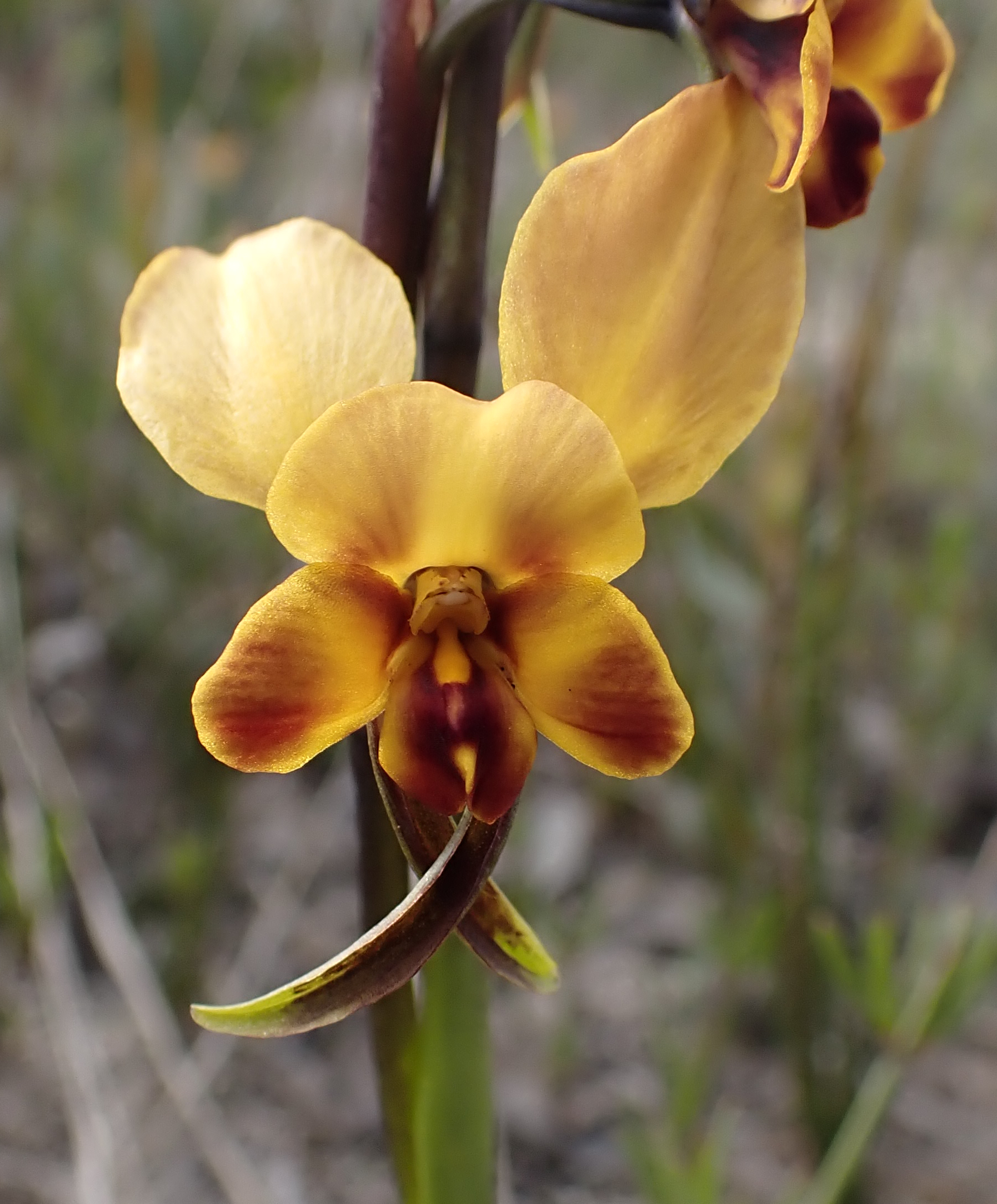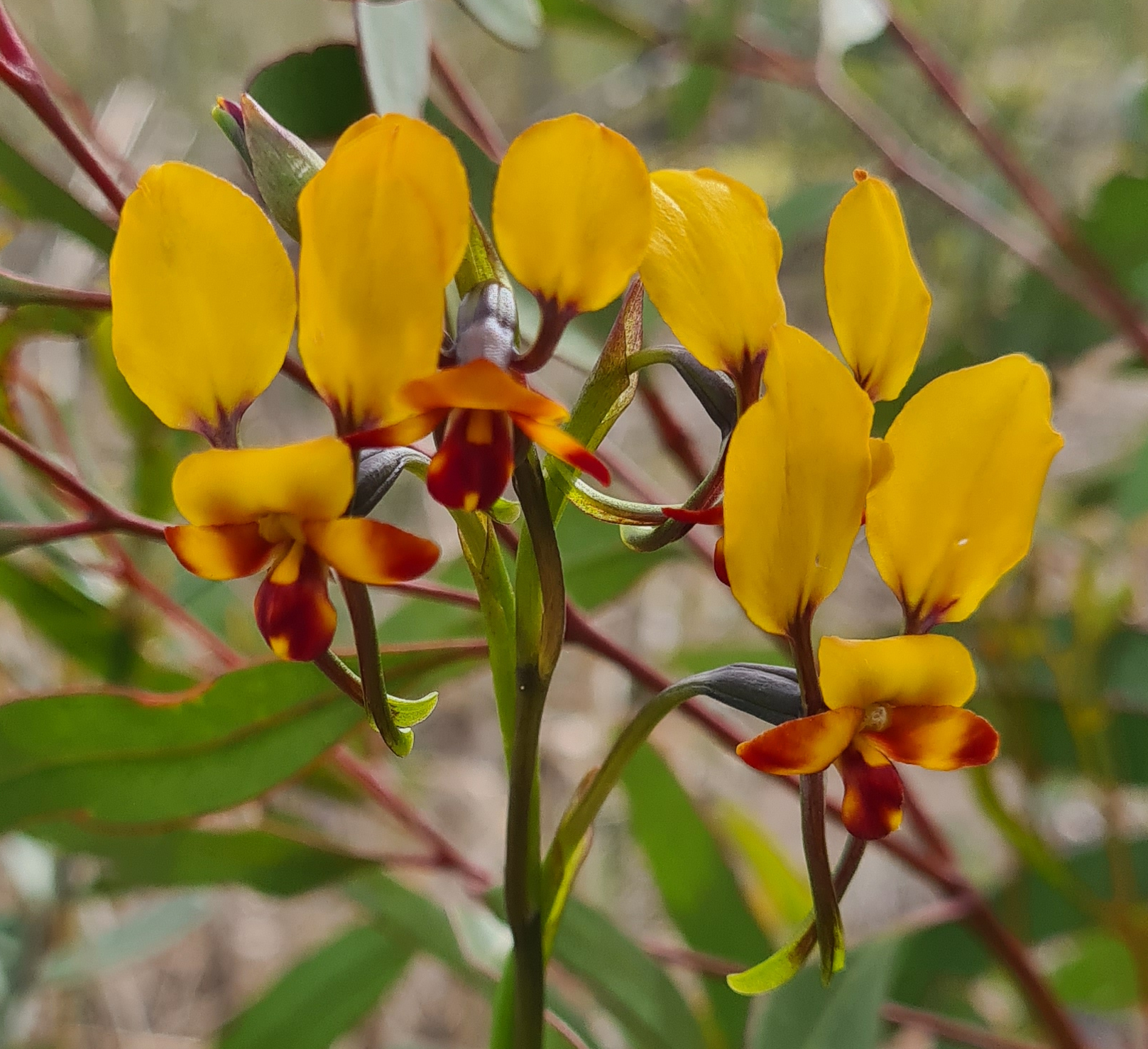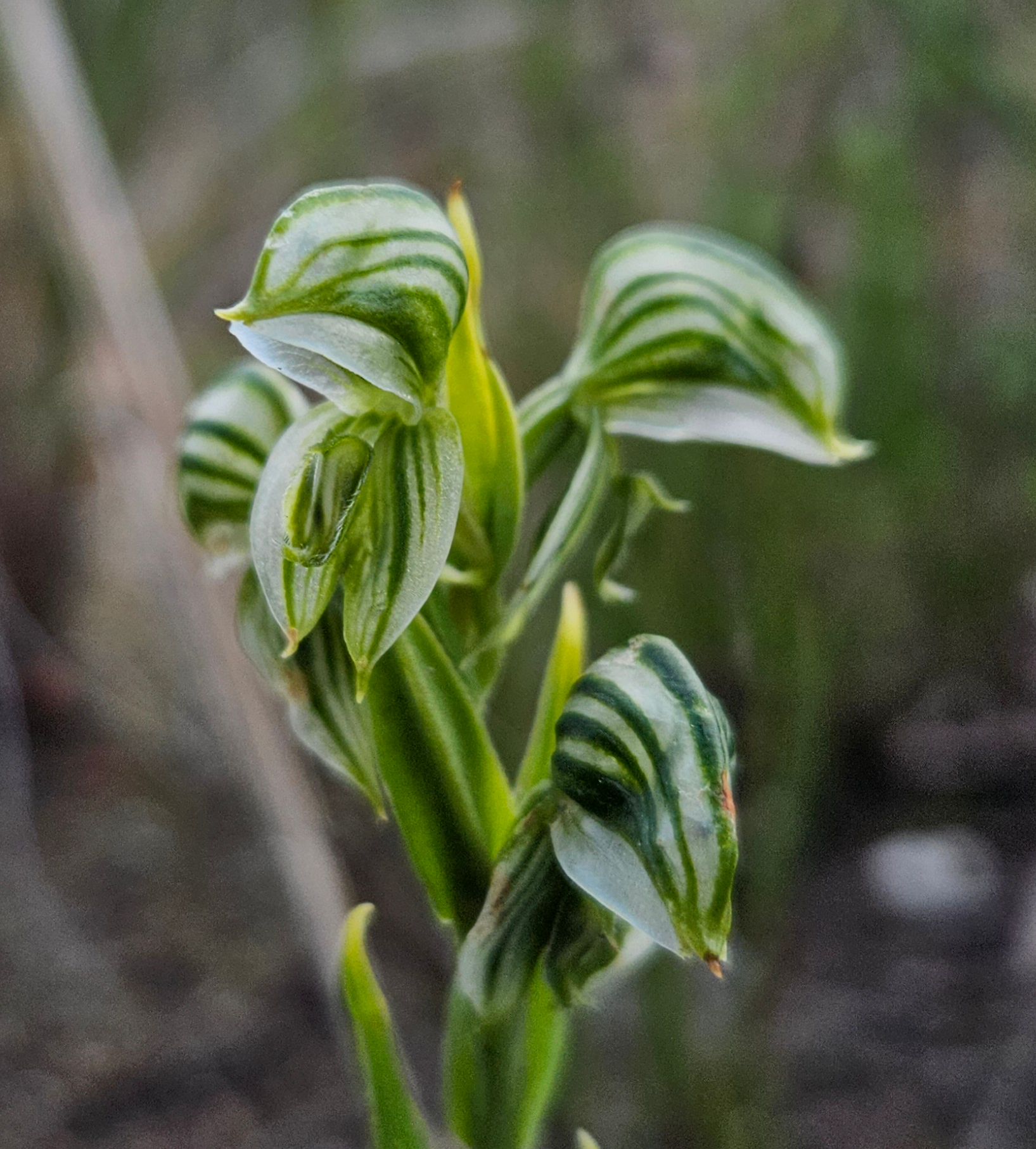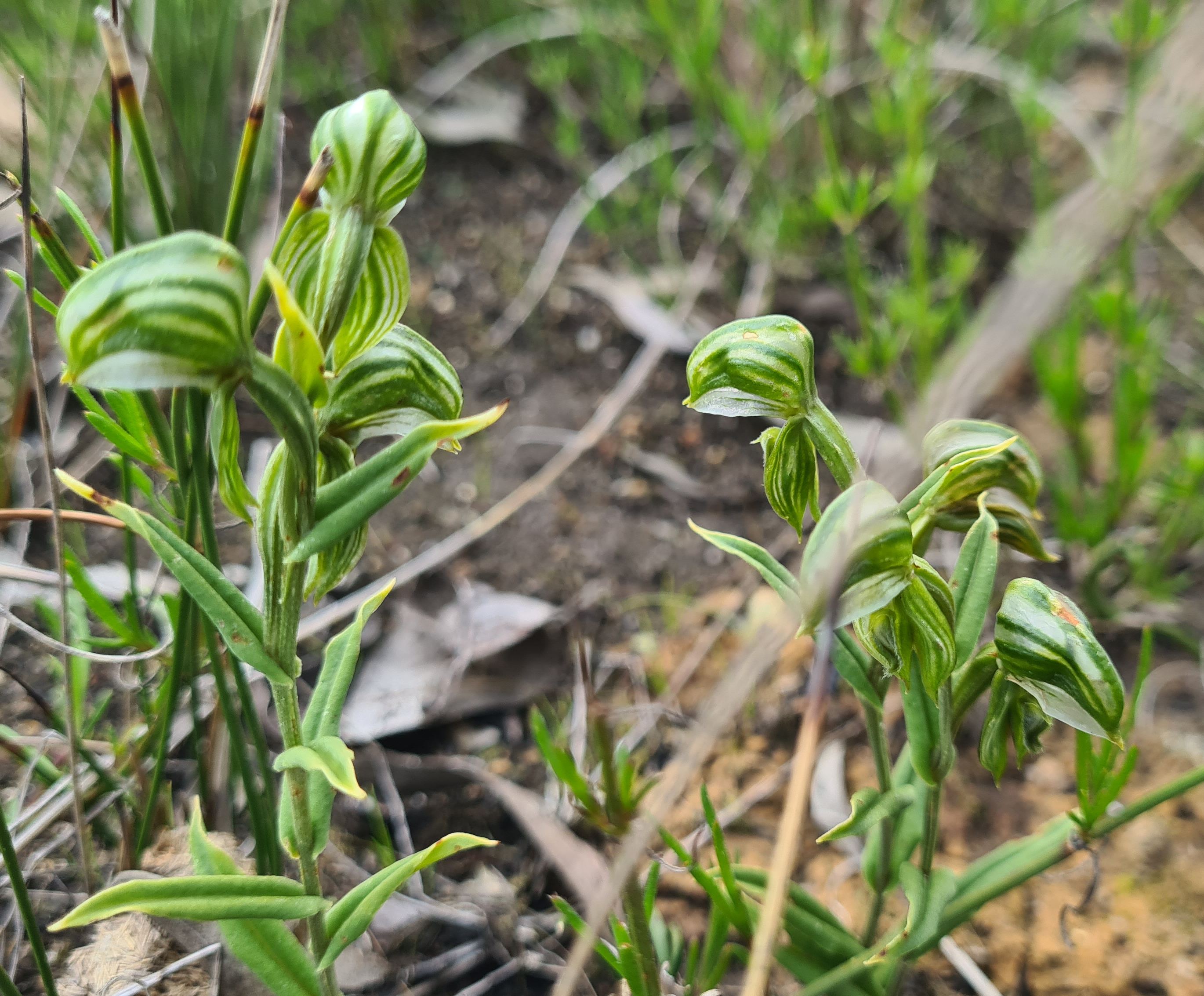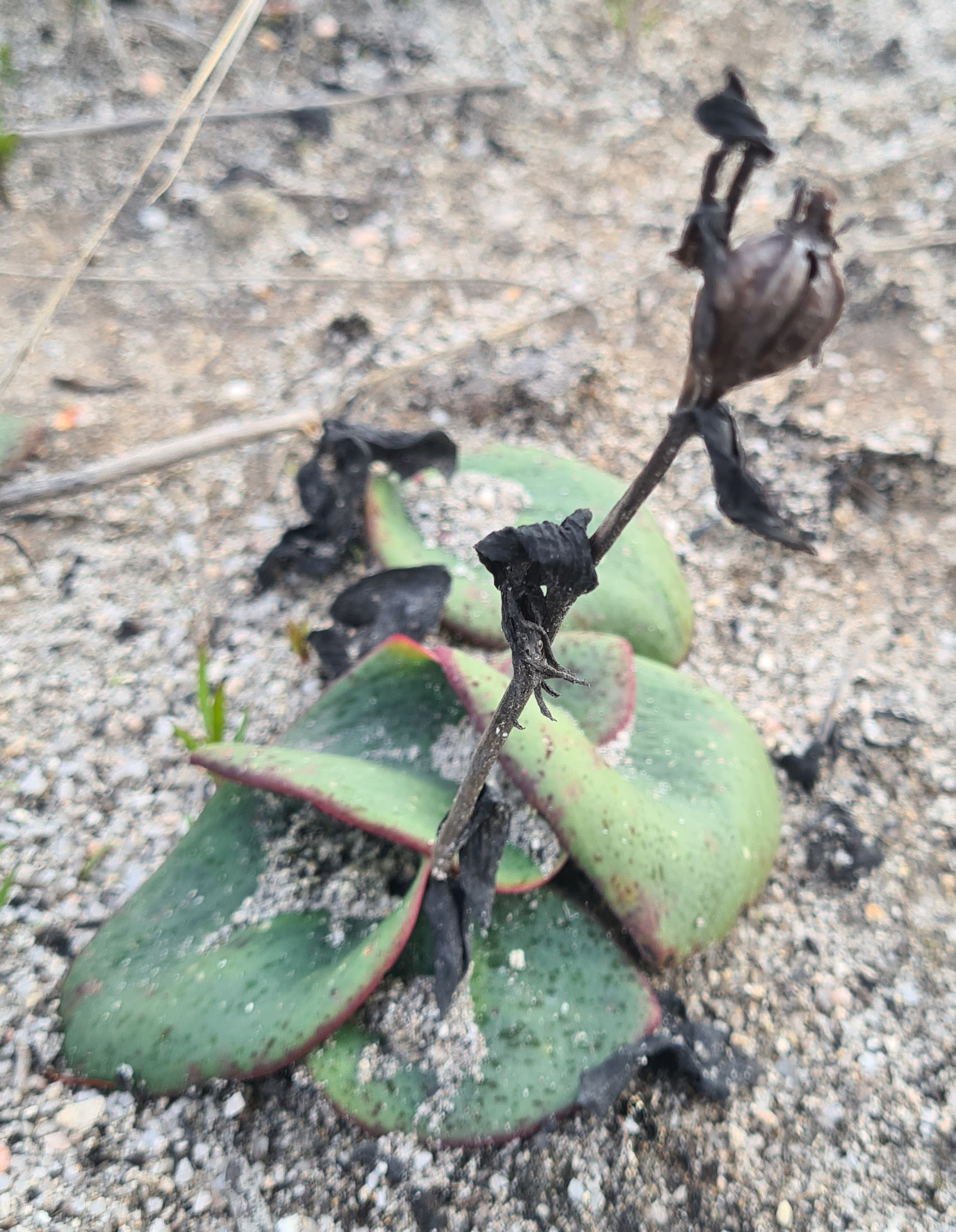After making and eating our complimentary breakfast, we pack up the Triton on a beautiful sunny winters morning and make tracks towards home. Overall, we enjoyed our stay at the Newdegate Hotel, plus it was great value for money.

About 15kms into our drive we make our first stop and check out the verge vegetation which is quite wide at the section of the road. As has proven common over this last week or so the first orchids found are the greenhoods. However, this time they appear to be another species due to the brown colouring. I feel they are all the Mallee banded greenhood (Pterostylis arbuscula) which is listed as having either brown and white or green and white flowers, is of short stature and has no more that 5 flowers per plant. The location is within their listed range, and they flower during June and July.



Orchids from the Pterostylis genus are the only other orchids found at this location. First up is an almost open Jug orchid (P. recurva) followed by an almost open Frog greenhood (P. sargentii). Then a sole Robust snail orchid (Pterostylis dilatata) is found flowering. These orchids are widespread from Northampton to Toolinna. The lack of a rosette on flowering plants is a distinctive feature.
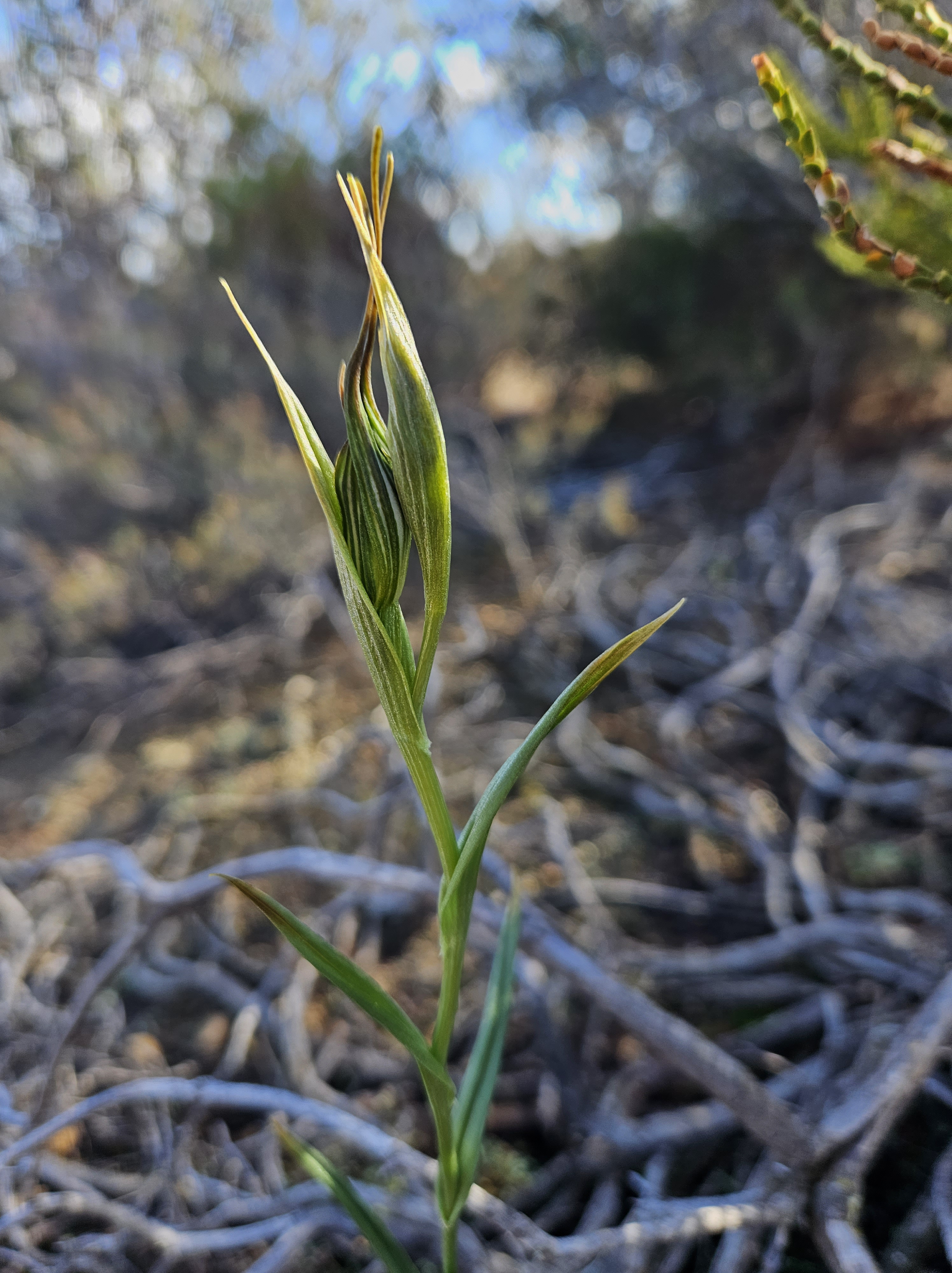
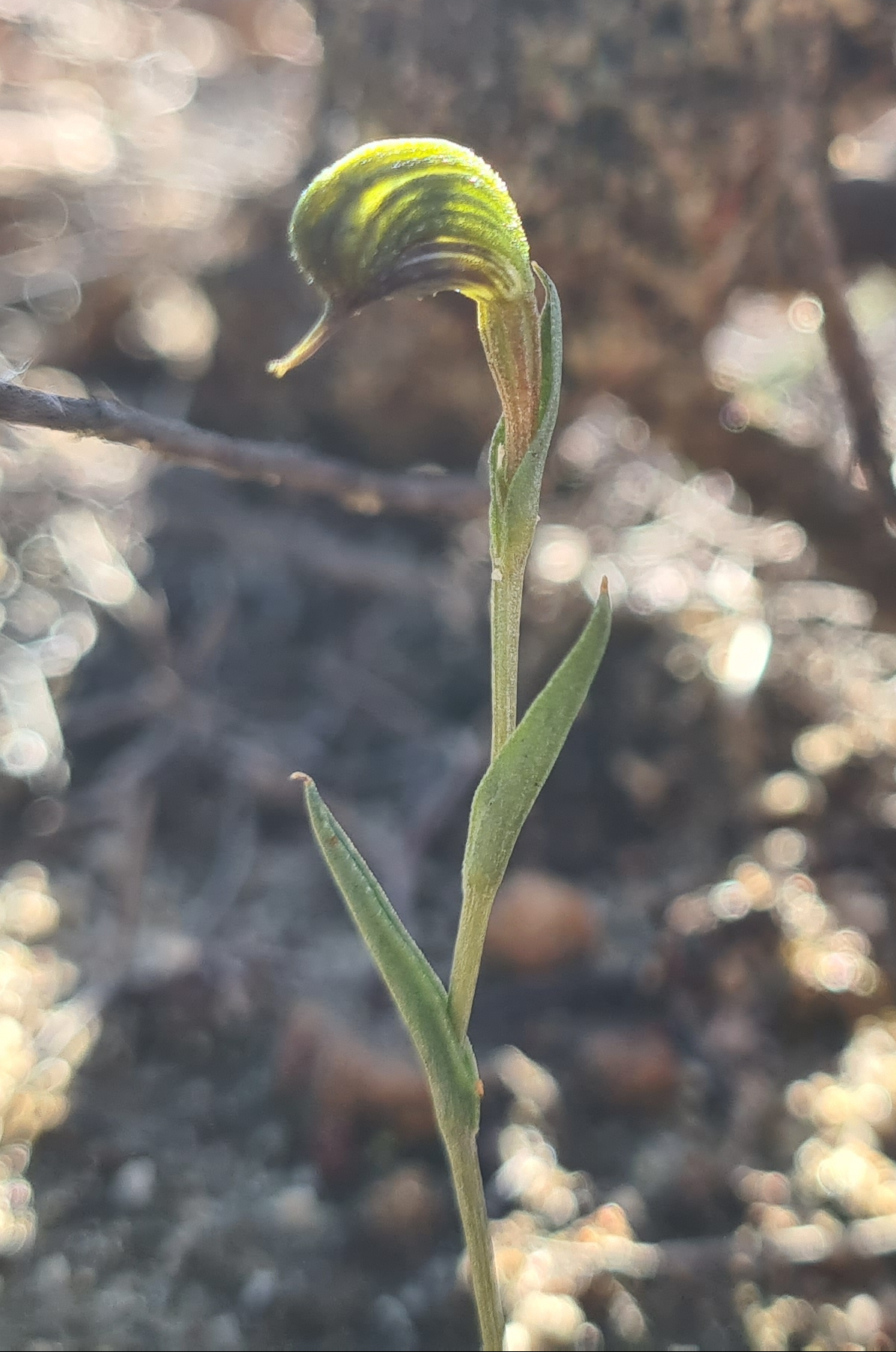

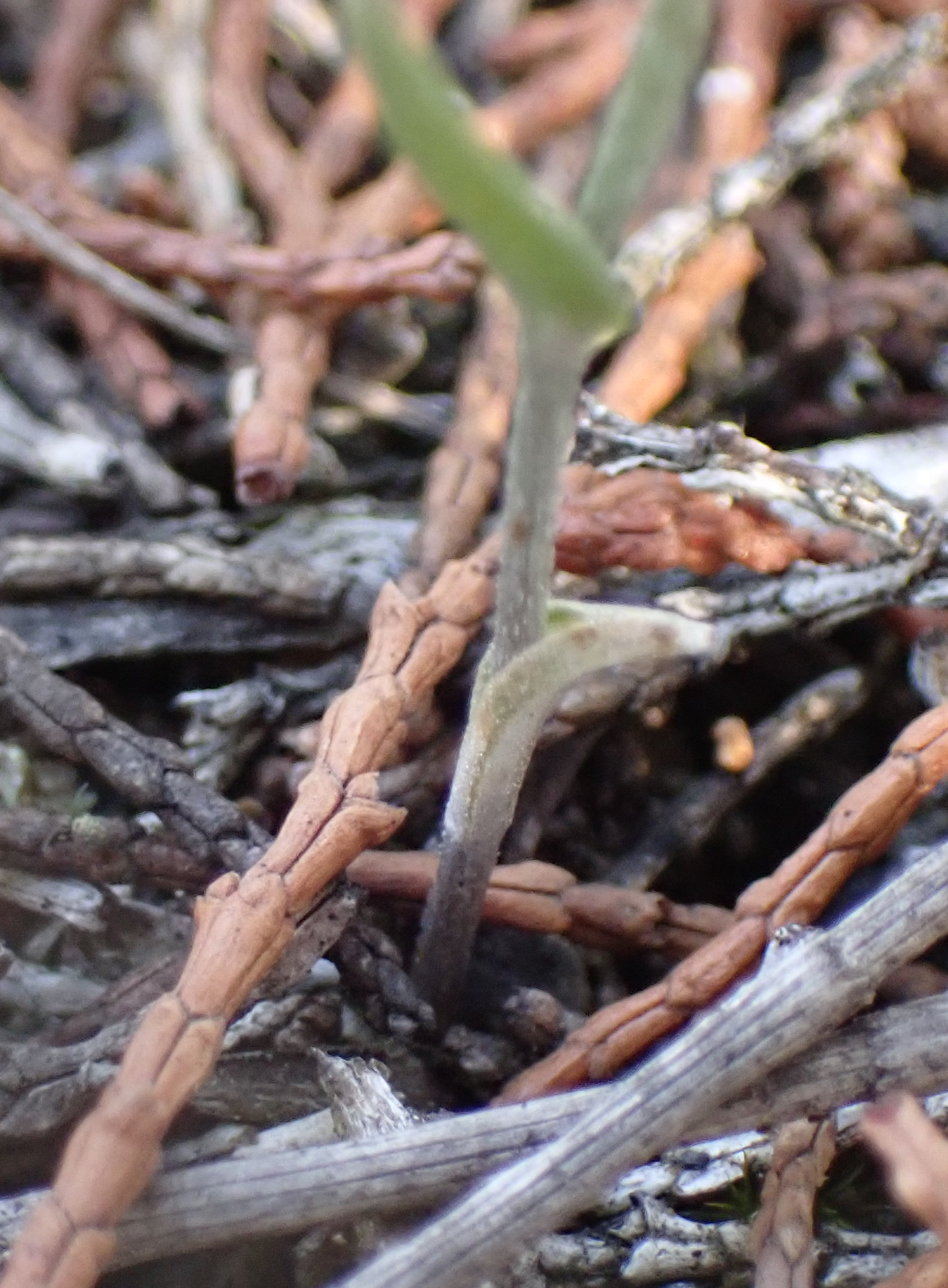
Nothing more, other than Red Beak leaves and some Caladenia leaves, so we move further along the road before making another roadside stop.
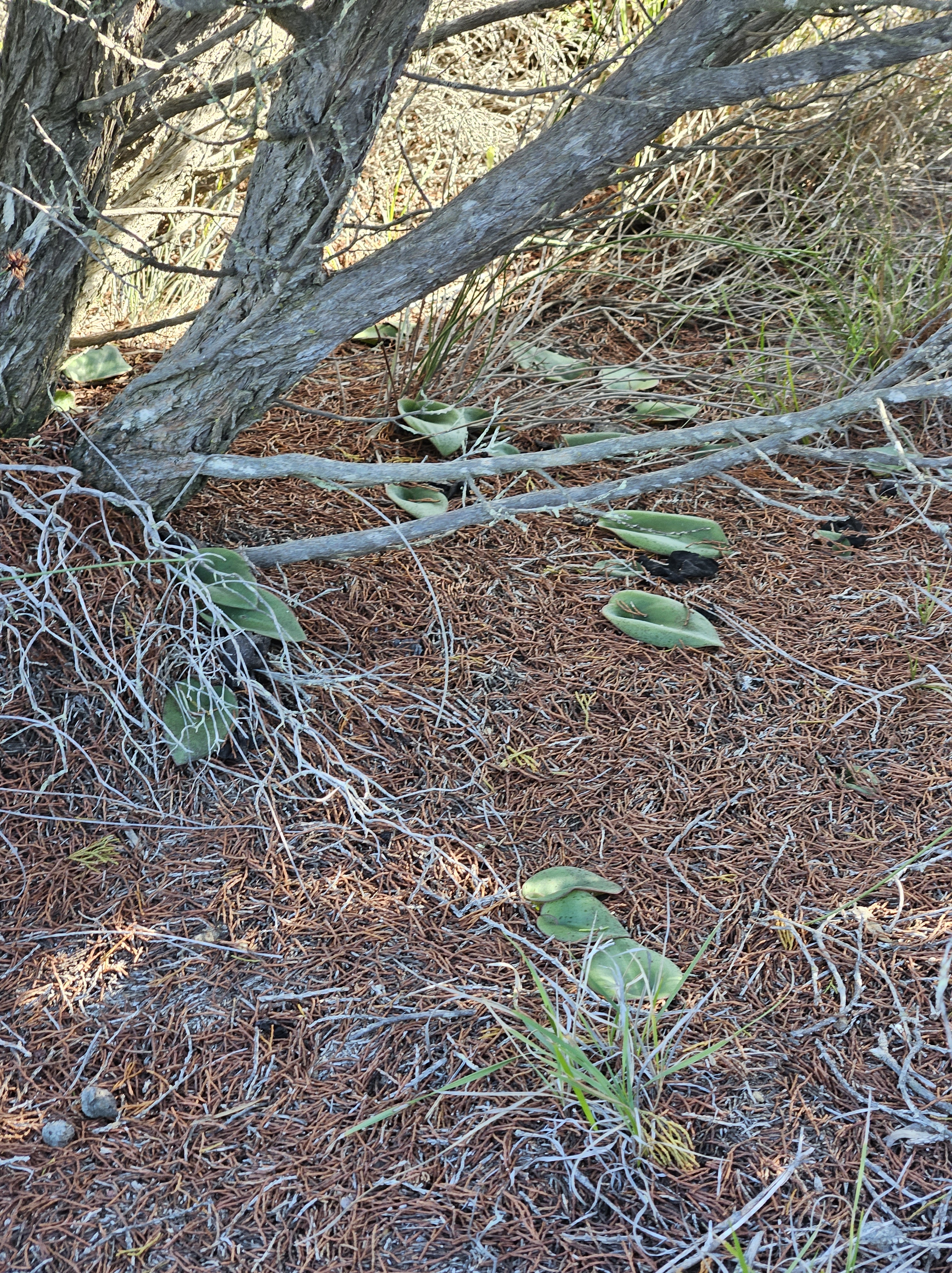
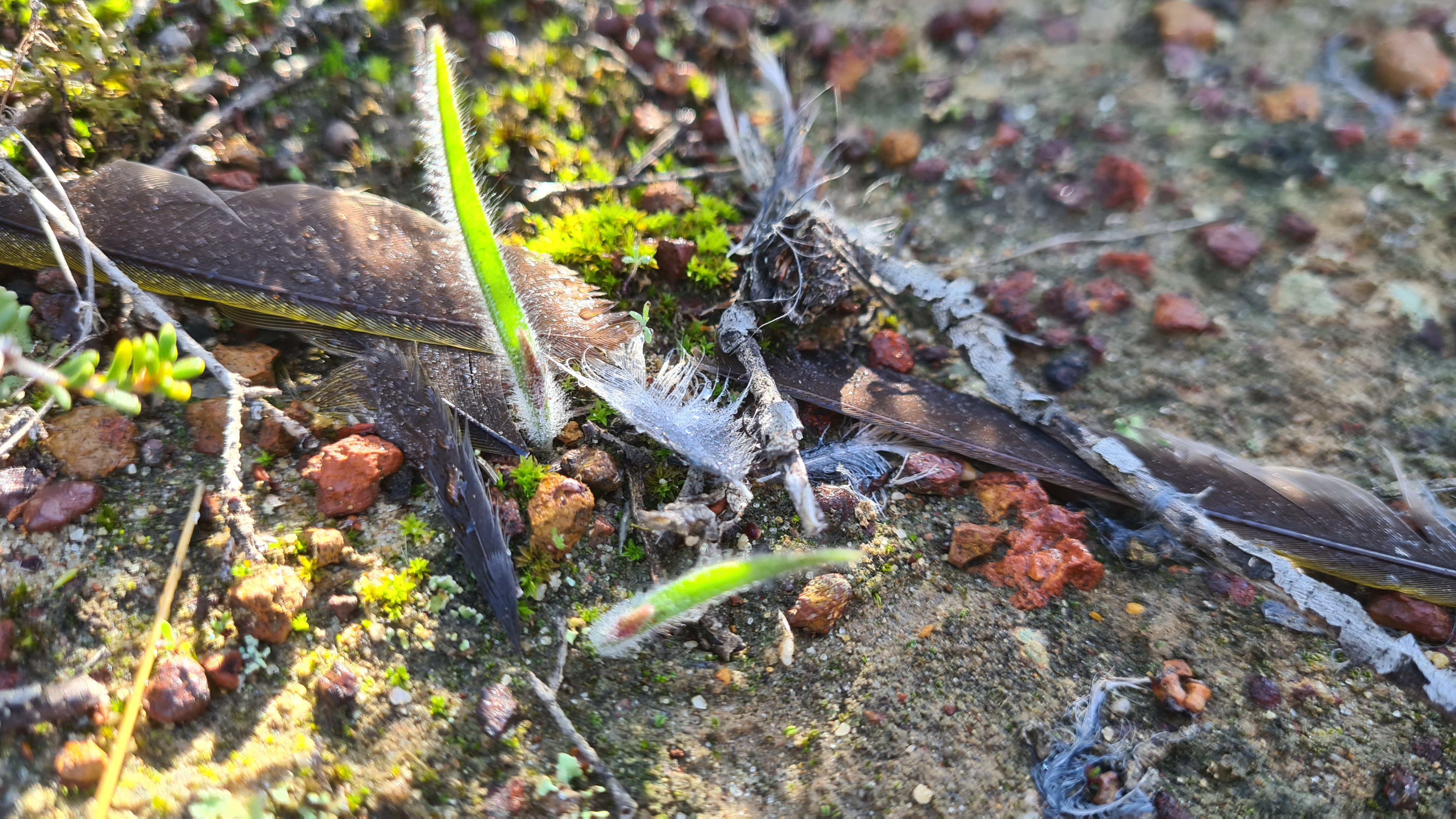

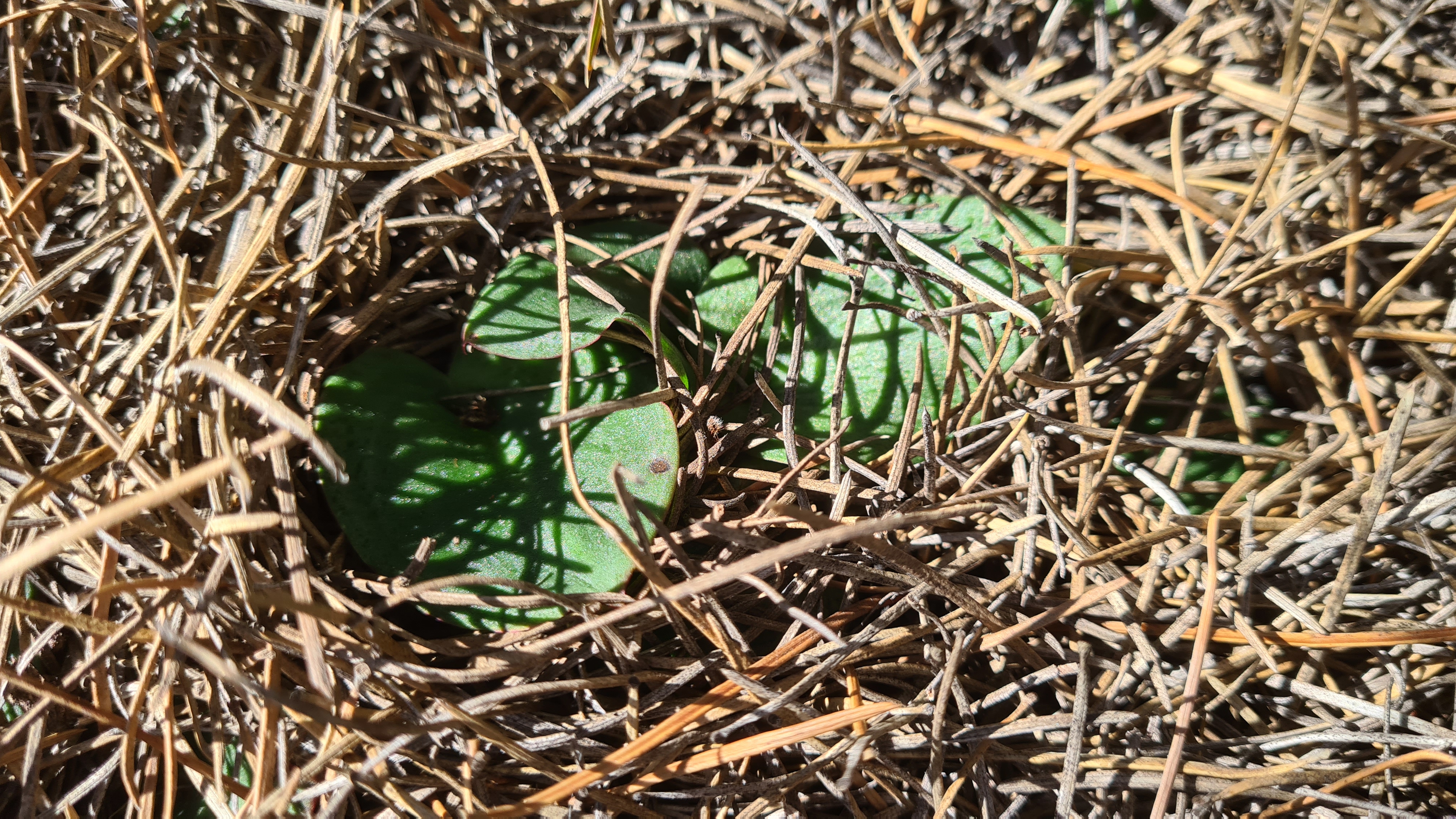
The next stop is also just another patch of pterostylis orchids. The greenhoods this time appear to be the Dark banded greenhood (Pterostylis sanguinea) which are consistently brown and white in colour, have more flowers per plant and are taller in stature than P. arbuscula. However, on closer inspection of my photos I think some of them may be P. arbuscula as they have green/brown and white flowers and 10 or less cauline leaves. What are your thoughts?




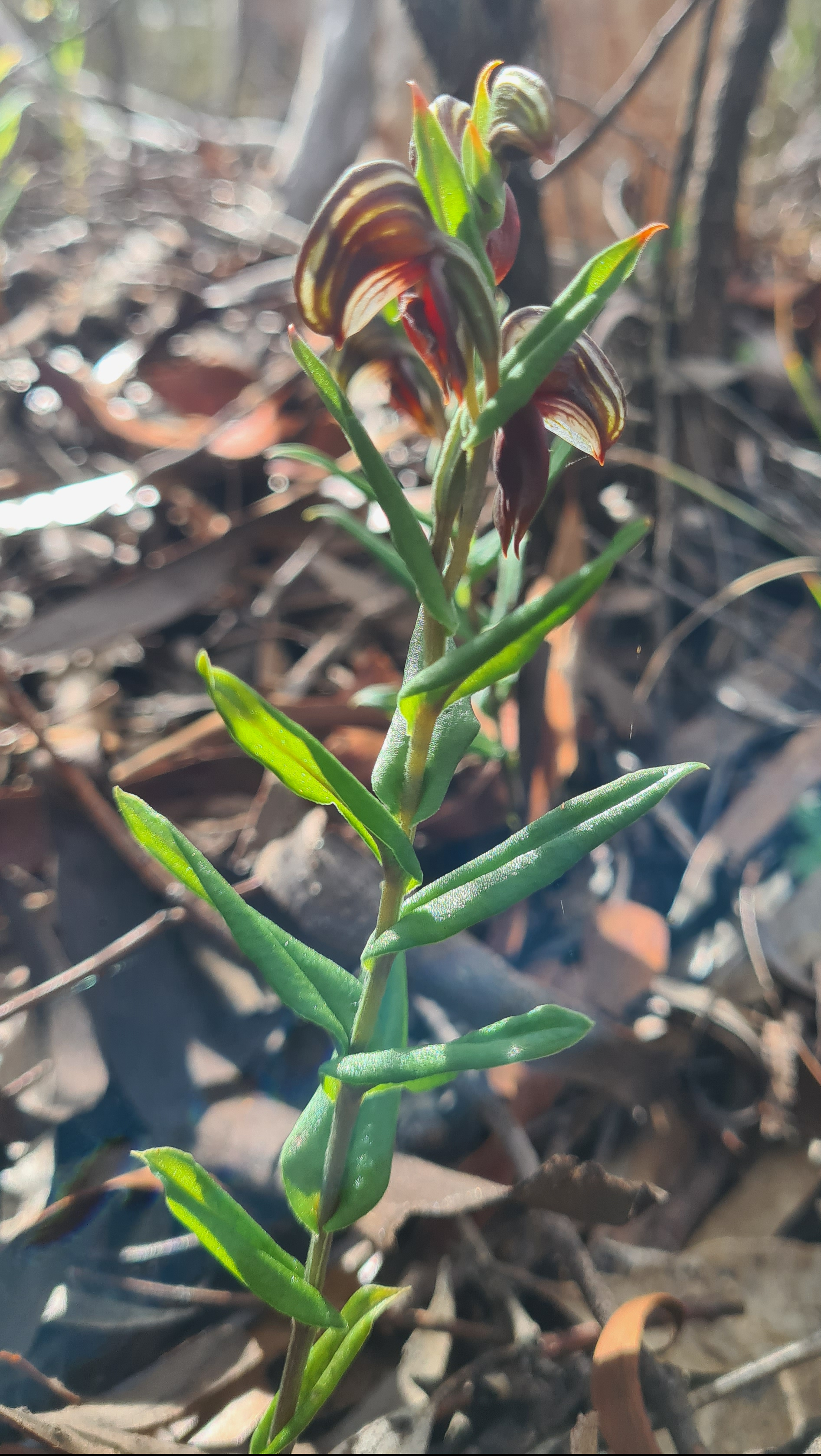
More Frog greenhoods (Pterostylis sargentii) are also found however excitedly some of these ones a fully formed. These are the earlier flowering of the 2 species, and I was able to get some good pics of the fleshy, glabrous horn-like structures on the labellum, which are distinctive features.
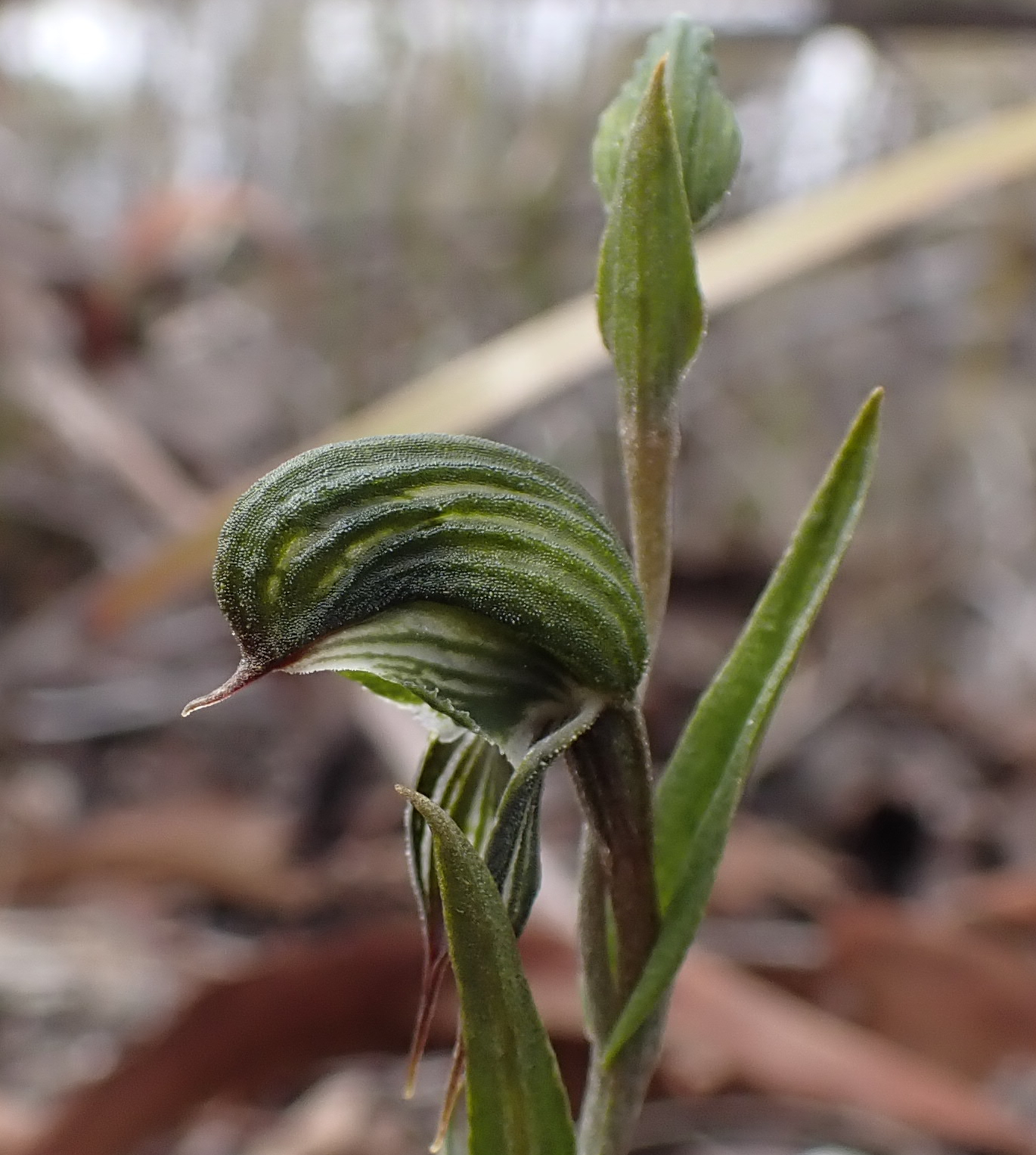
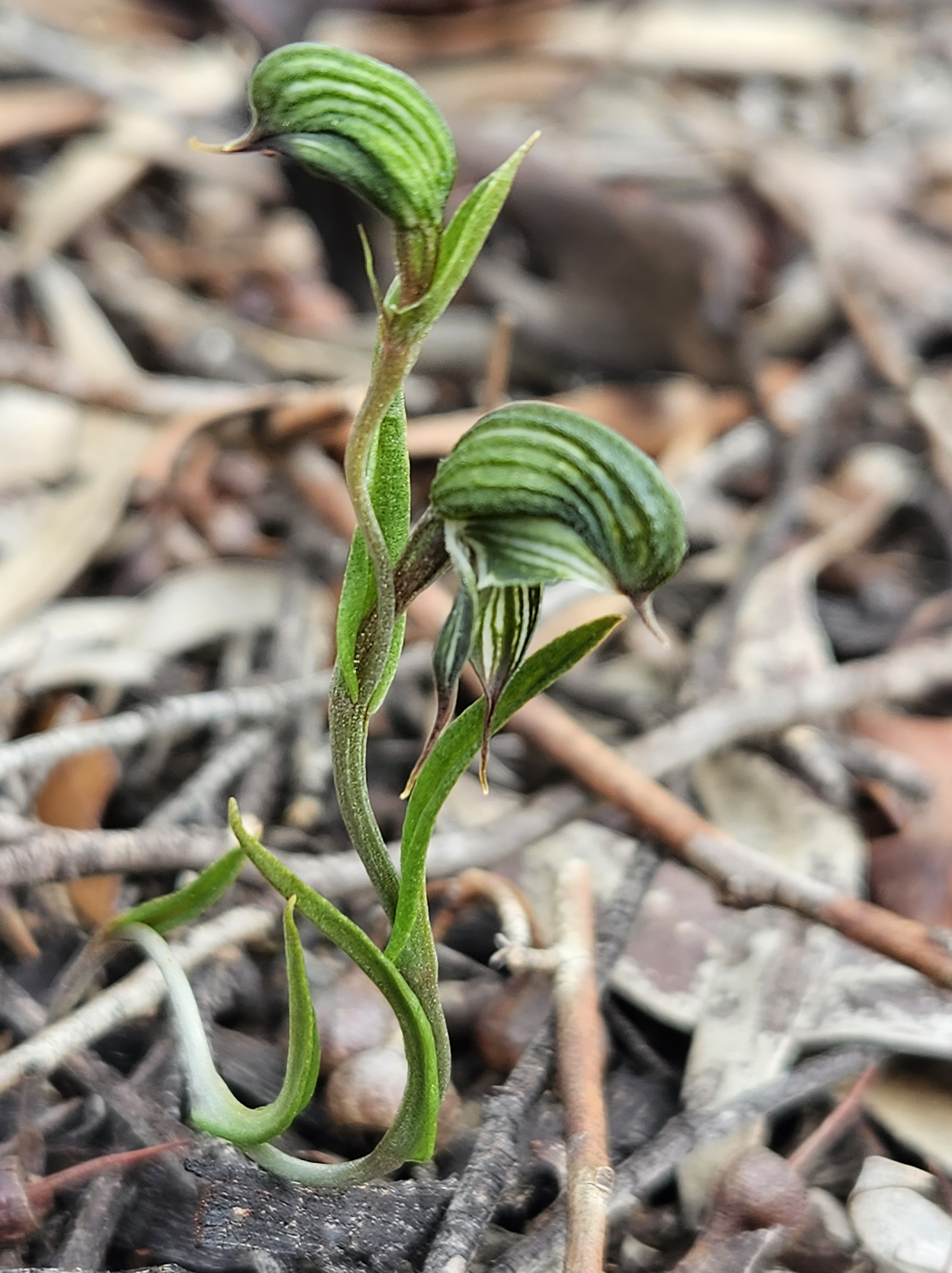
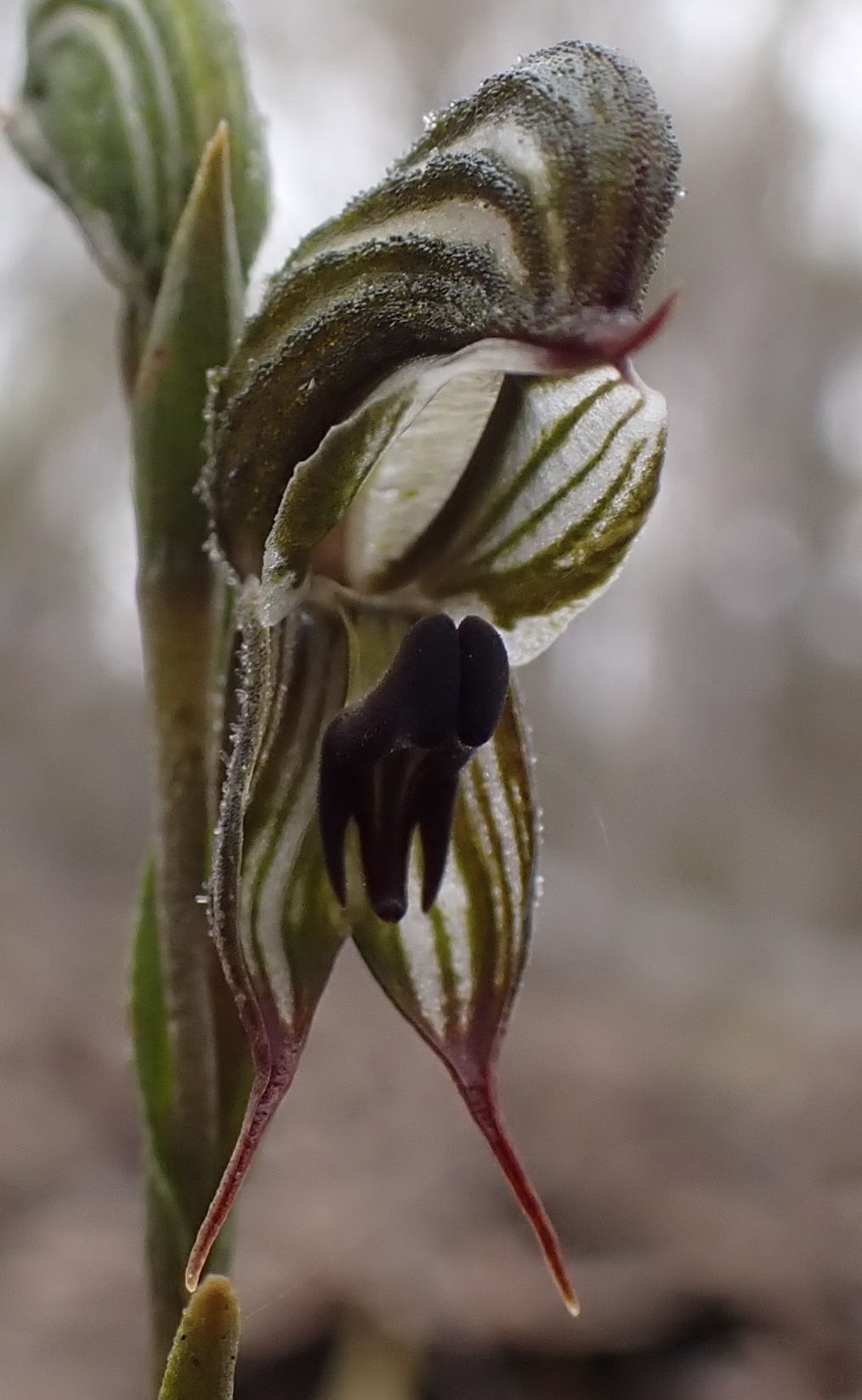
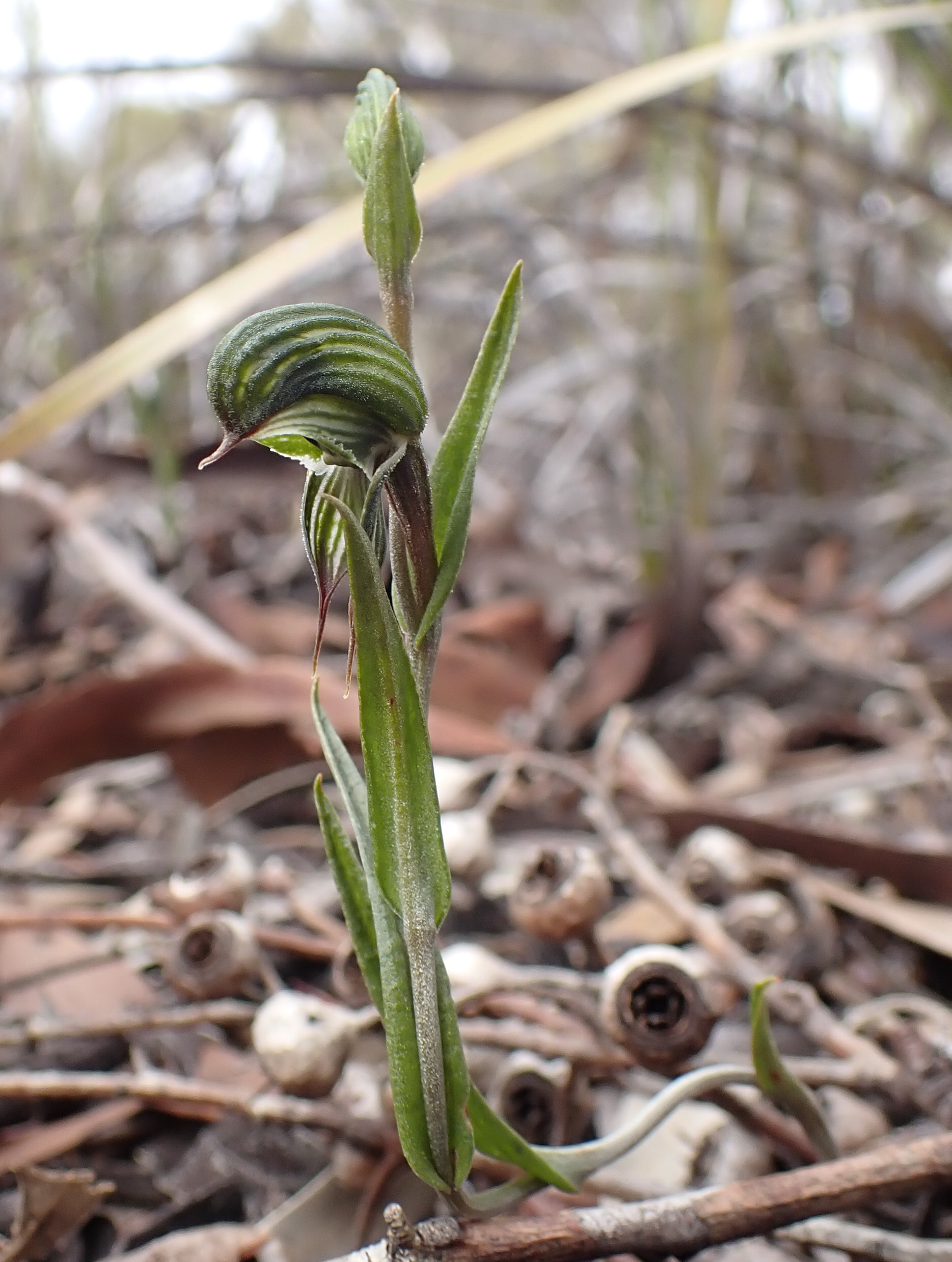
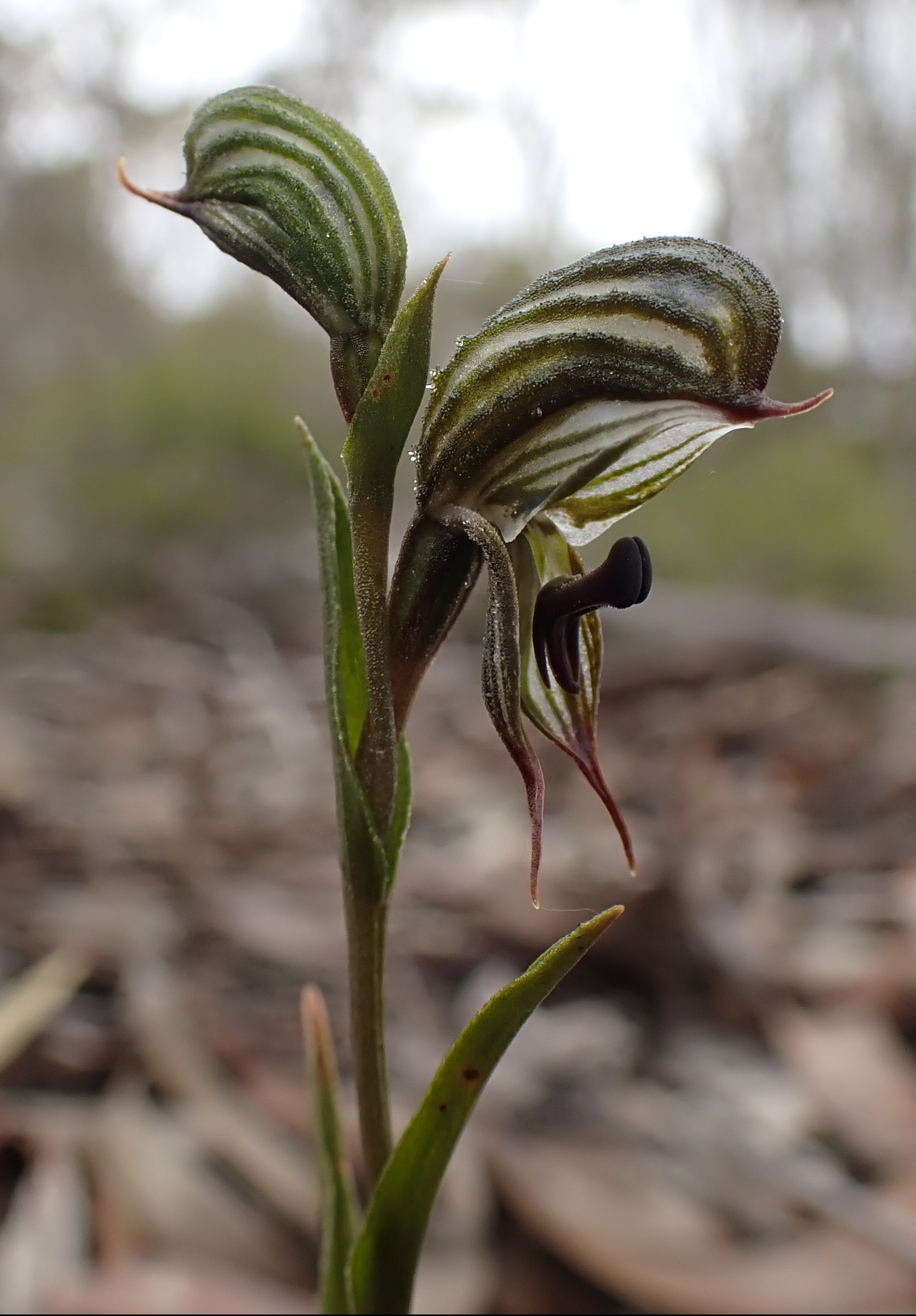
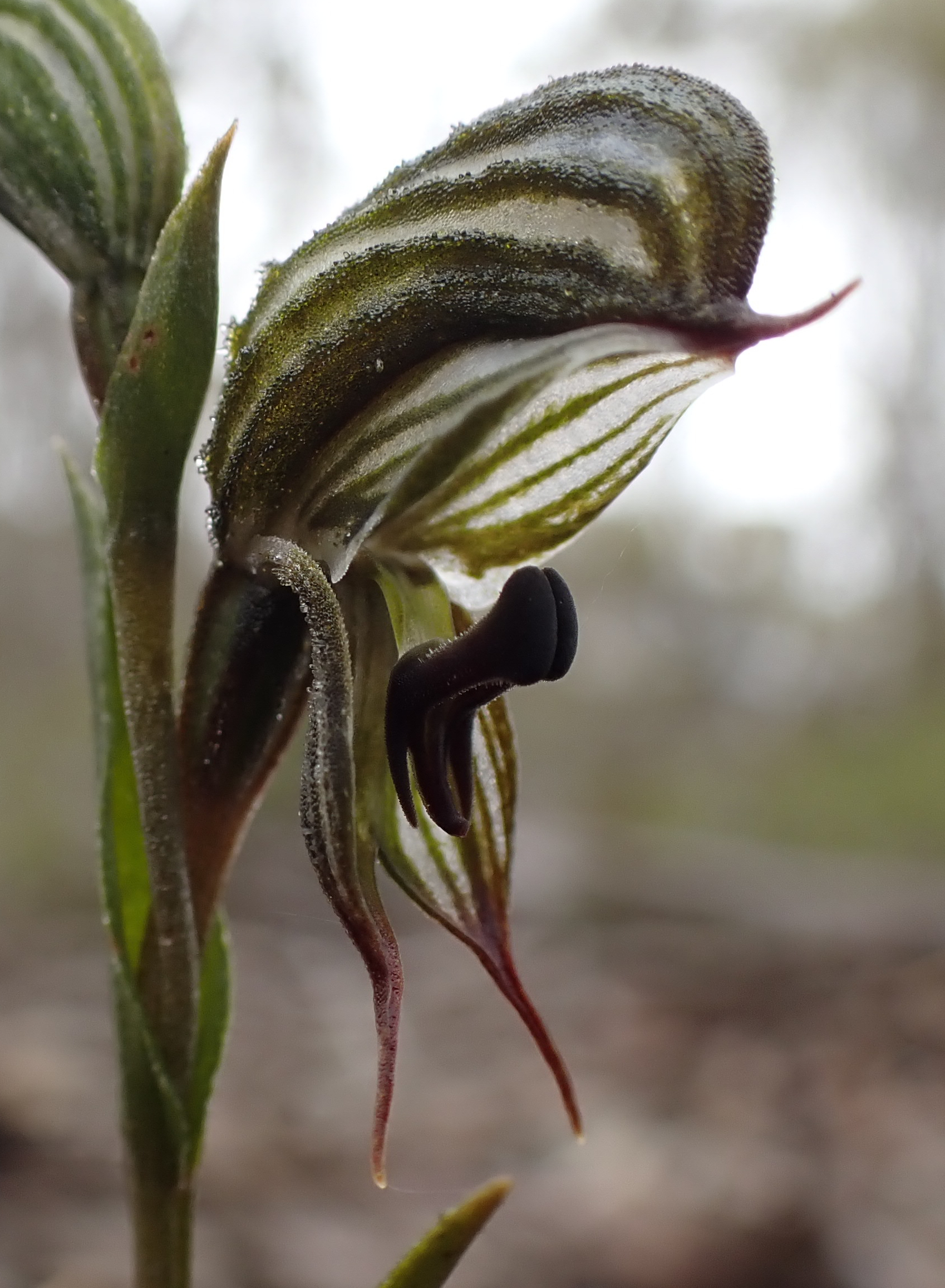
Only thing else found was a nice patch of Sun orchid (Thelymitra sp.) leaves and a single red backed Pink fairy leaf?
So onward we go to Lake King where we make a toilet stop, before heading out to Frank Hahn National Park. Here we visit Lillian Rock where we eat lunch before exploring the rock area. Only sign of orchids here were also a patch of leaves, identification of which I will not attempt.
Disappointedly we leave here and move south down Cascade Road then right onto West Point Road and left onto Melaleuca Road. Past River Road intersection we make a roadside stop and still no orchids. A 2nd roadside stop at different looking habitat still turns up nothing, so we make a beeline for a known orchid location.
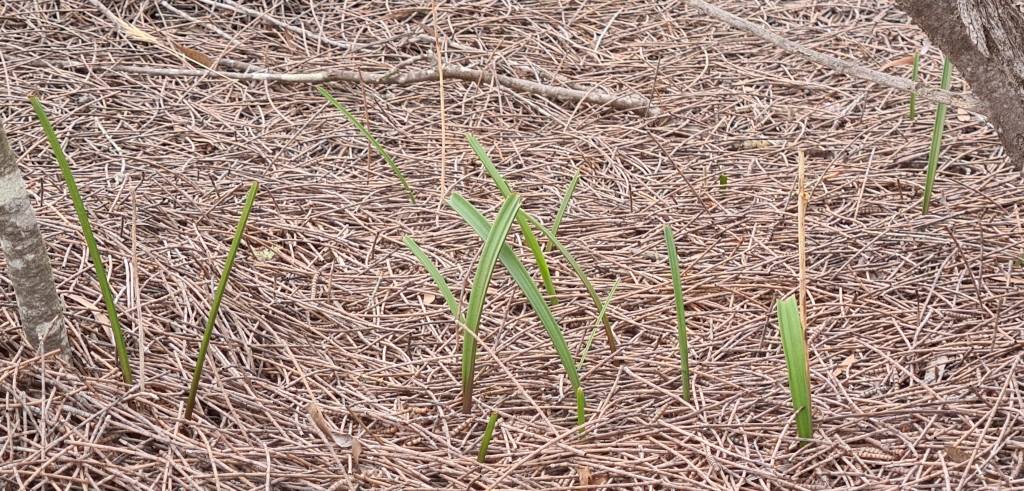


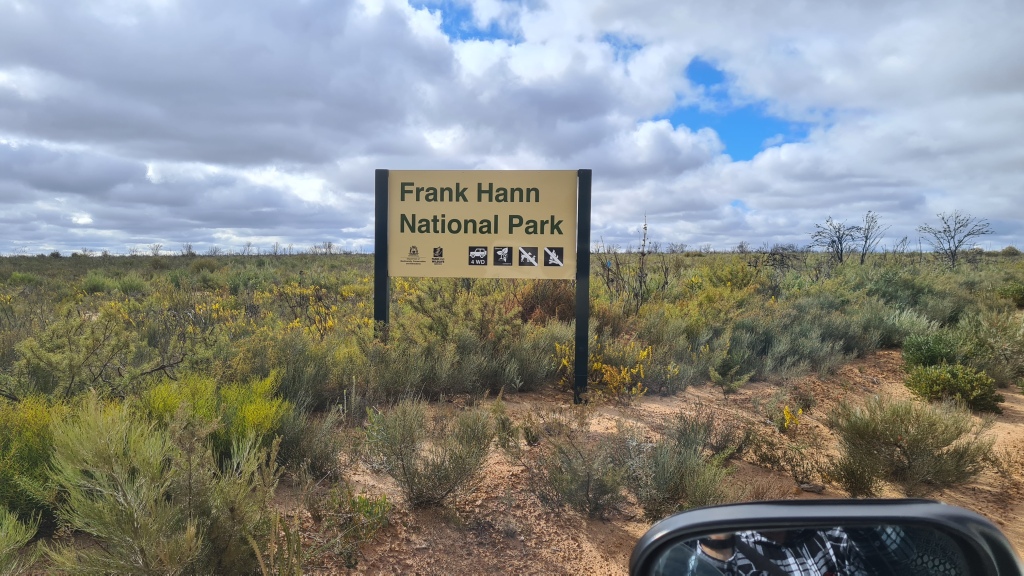
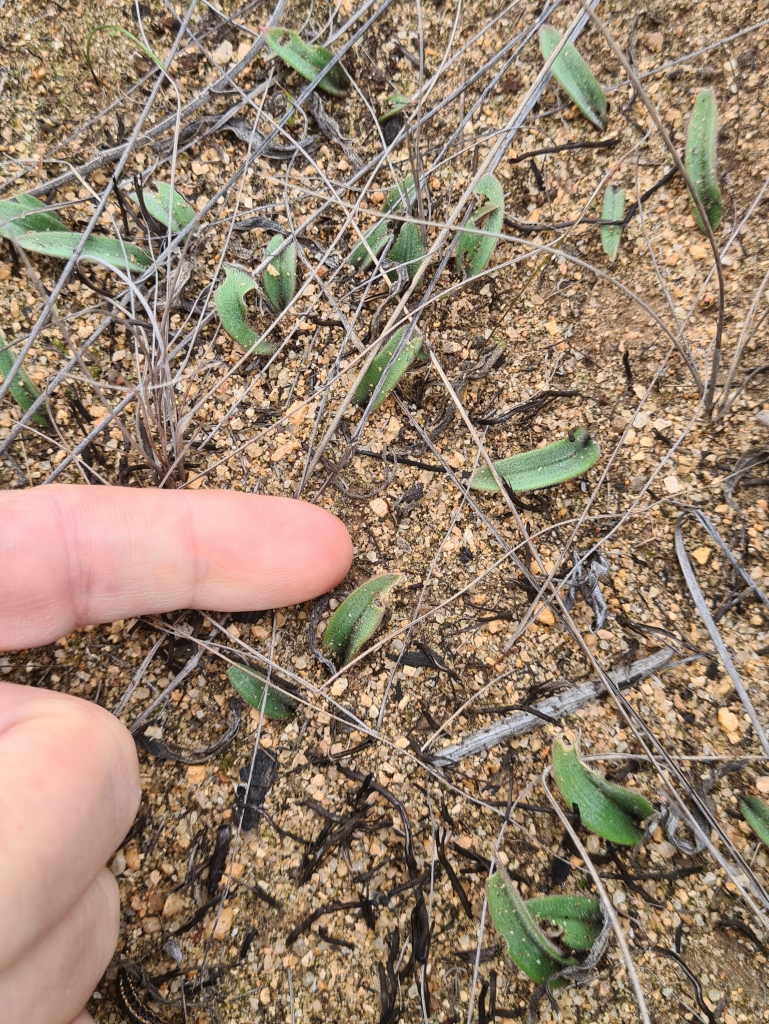
We arrive at one of our favourite and reliable locations on Mills Road. Here we immediately spy the bright yellow donkey orchids. They are found over the entire area we walk around which is quite amazing. Identifying them is difficult as 2 very similar species are listed as occurring in the Ravensthorpe shire and this location is only 20km from the coast. The possible species are the Green Range donkey orchid (Diuris littoralis) and the South coast donkey orchid (Diuris brockmanii). Heights range from 180/150mm to 300mm and flowering season – Jul/Jun to Sep/Aug respectively, which adds to ID confusion. Seems size of the flower may assist with ID so I may need to take photos with tape measure in view to assist with this next time.
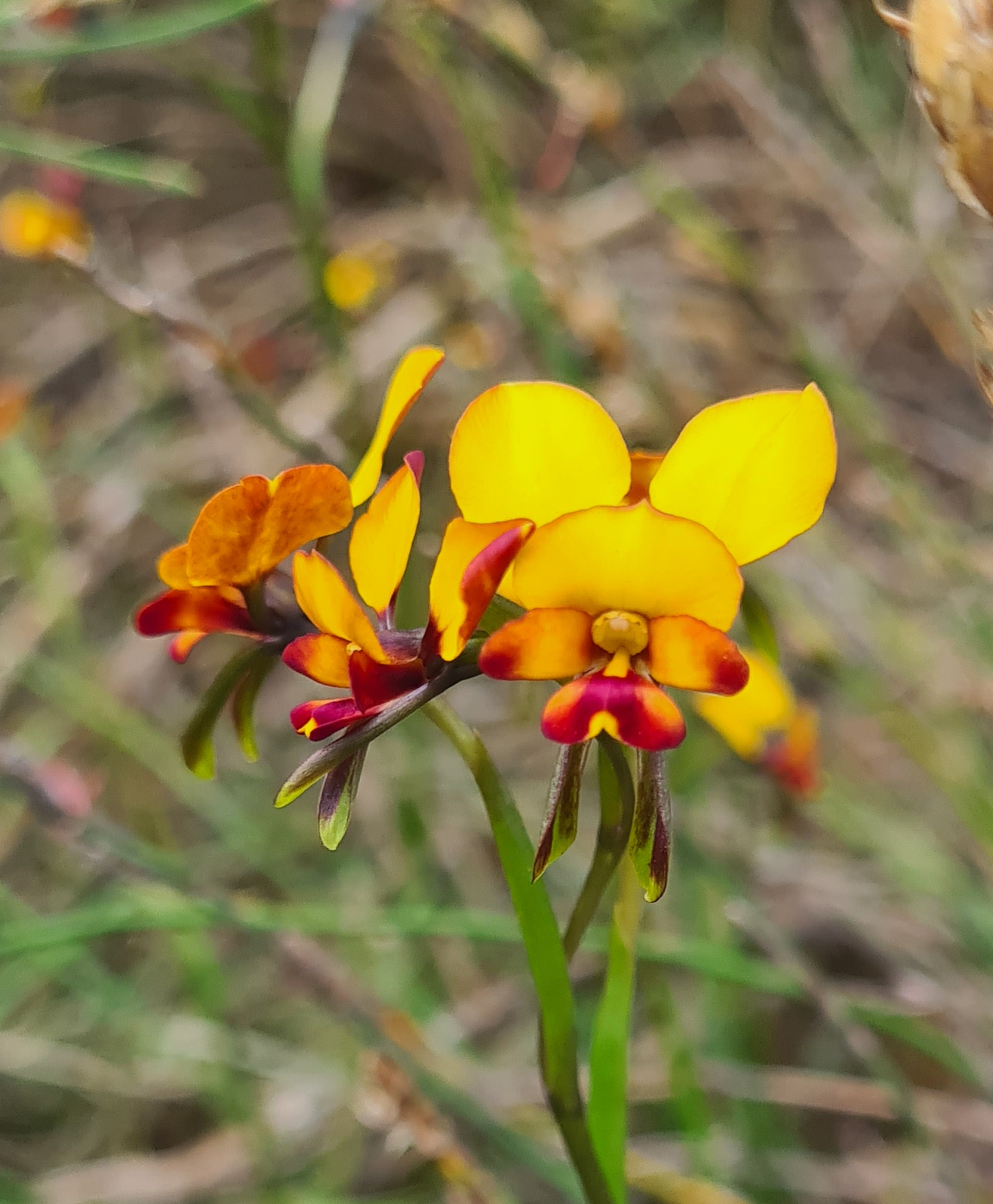
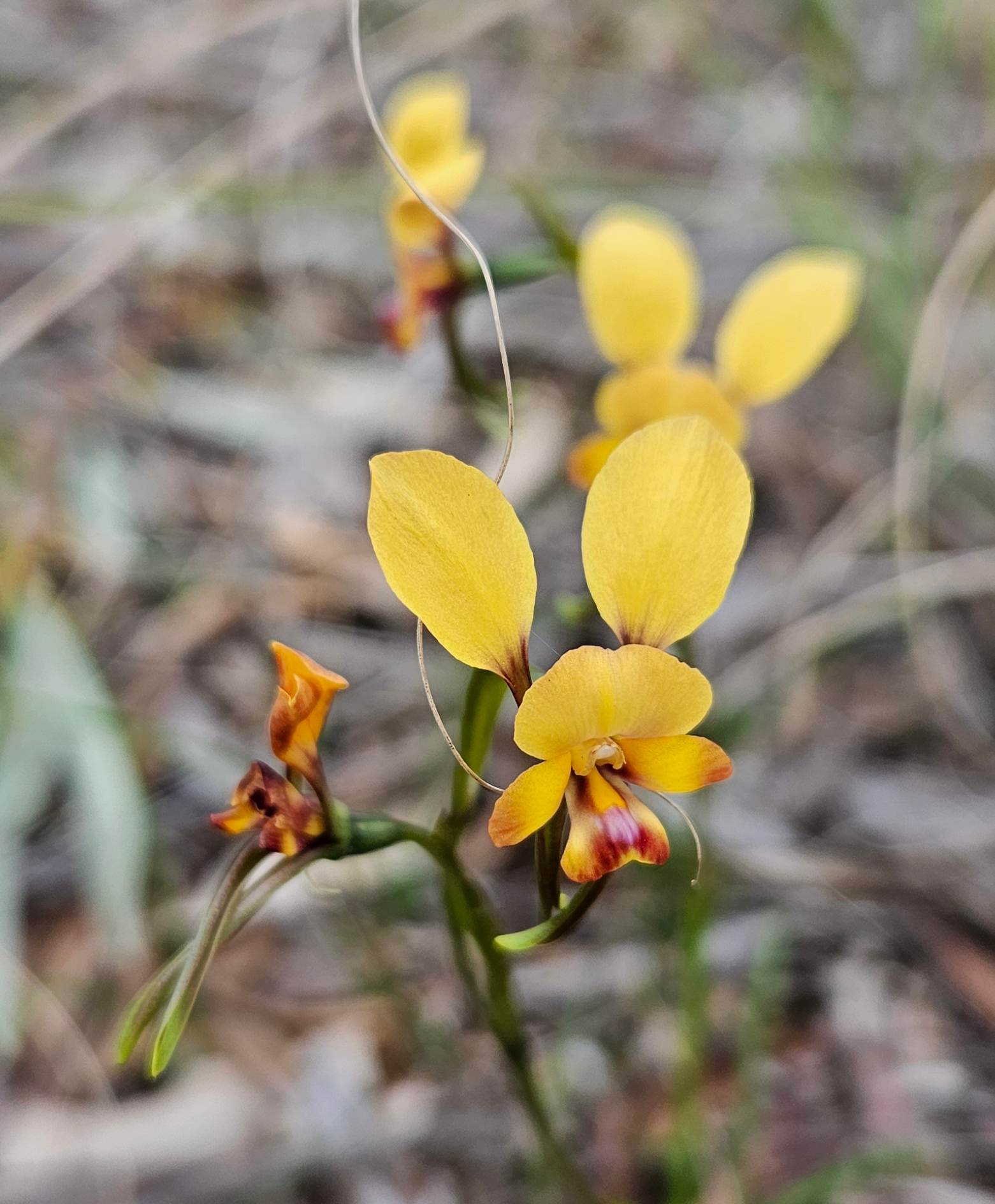
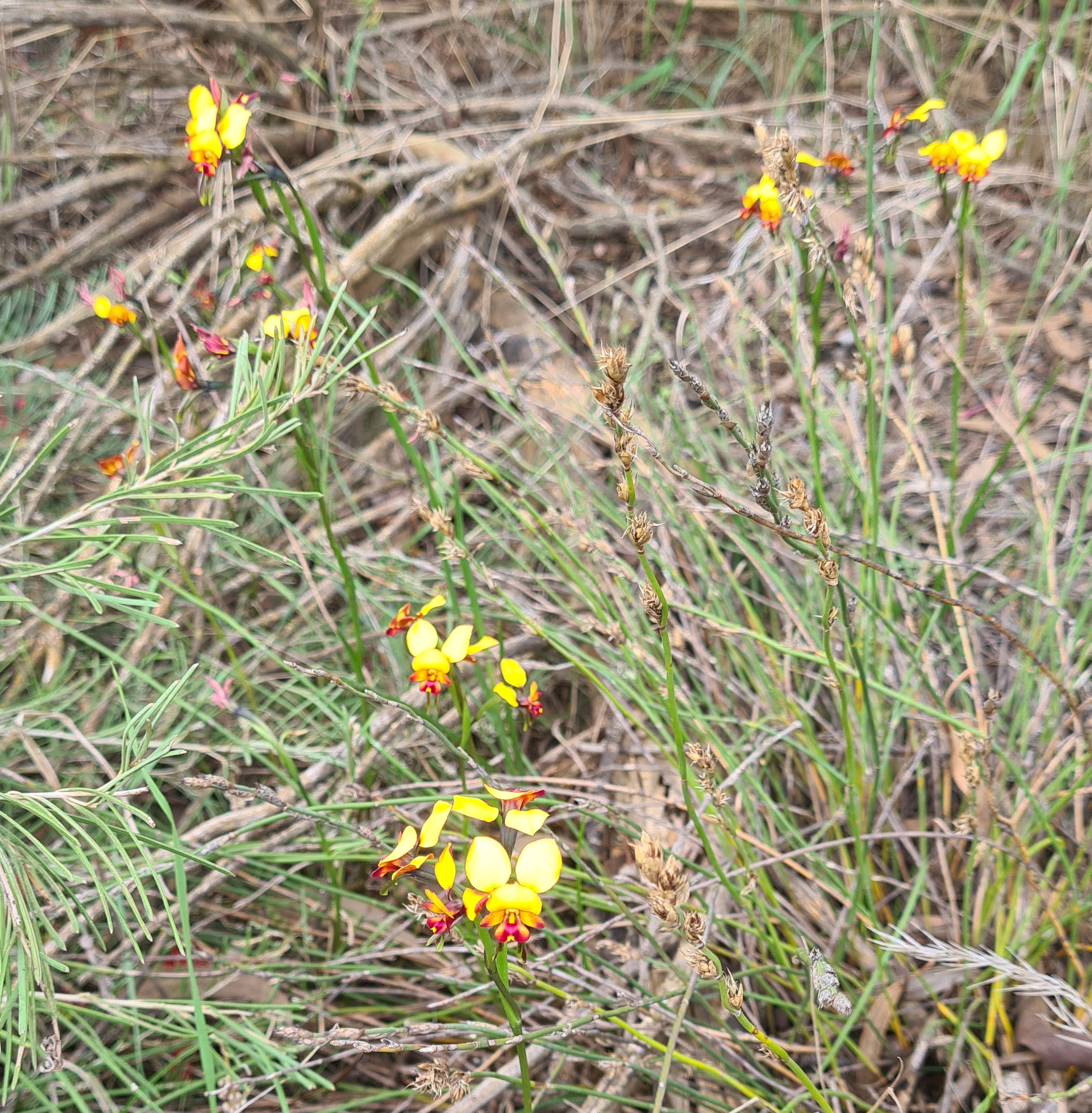

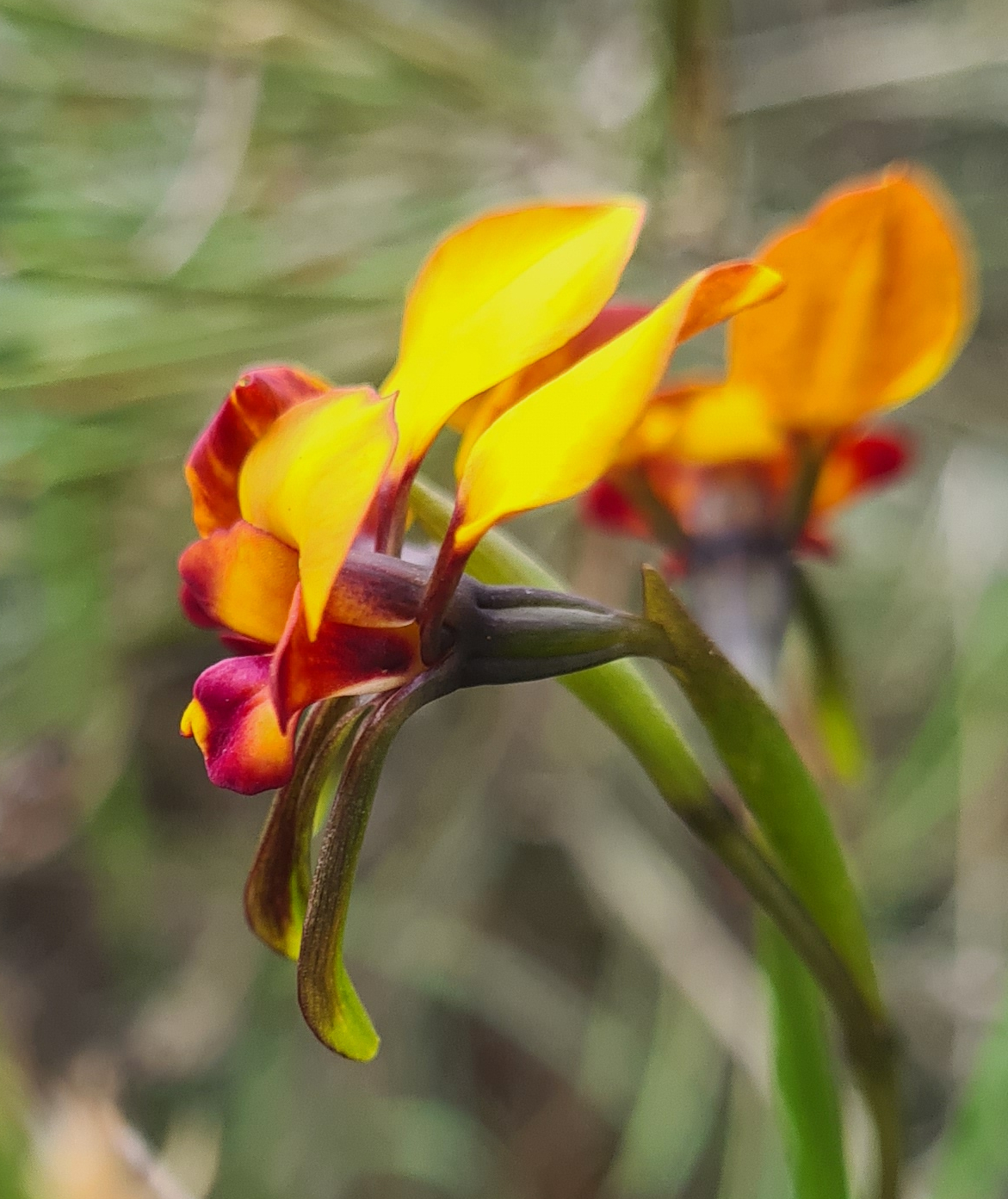
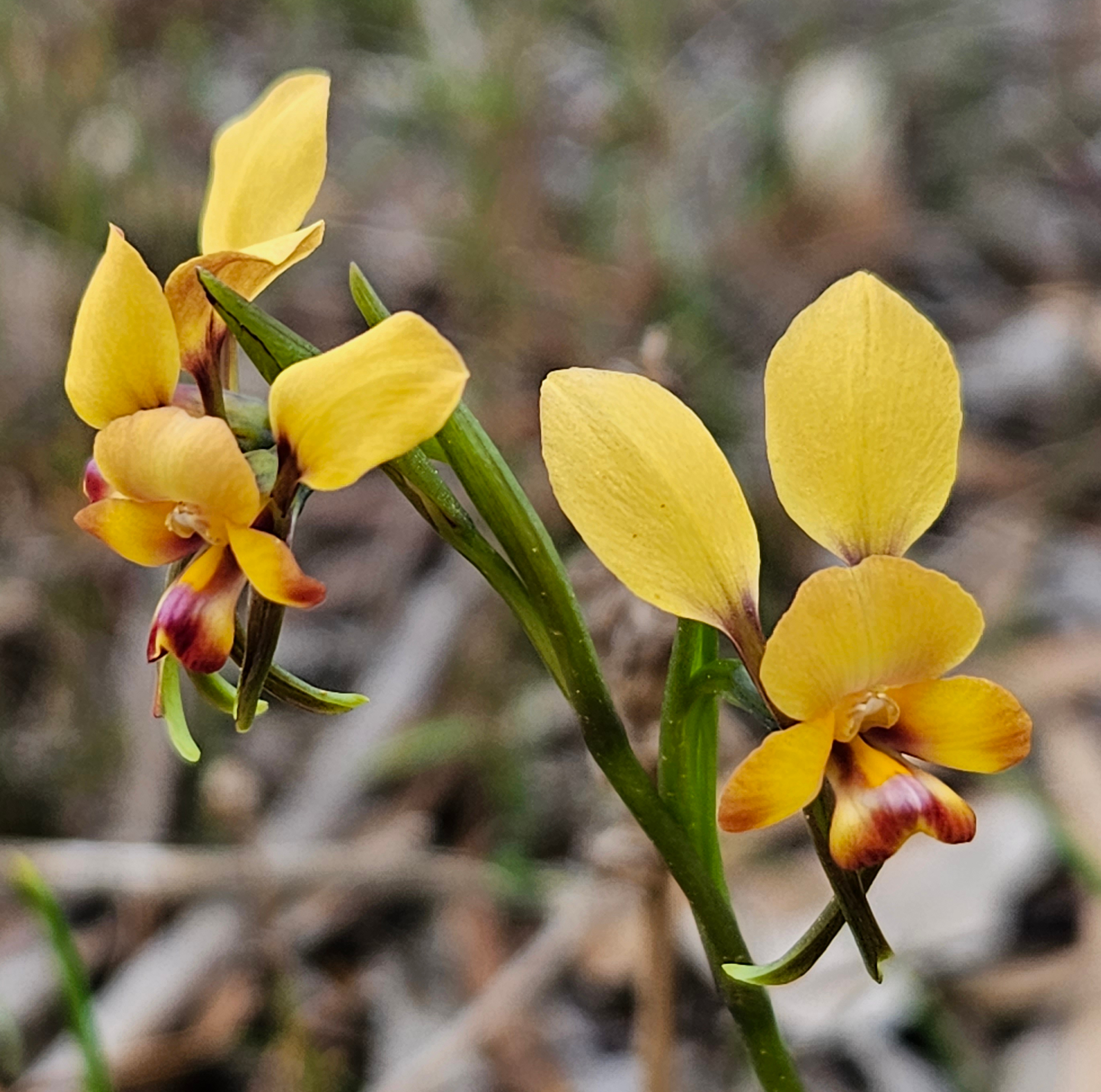
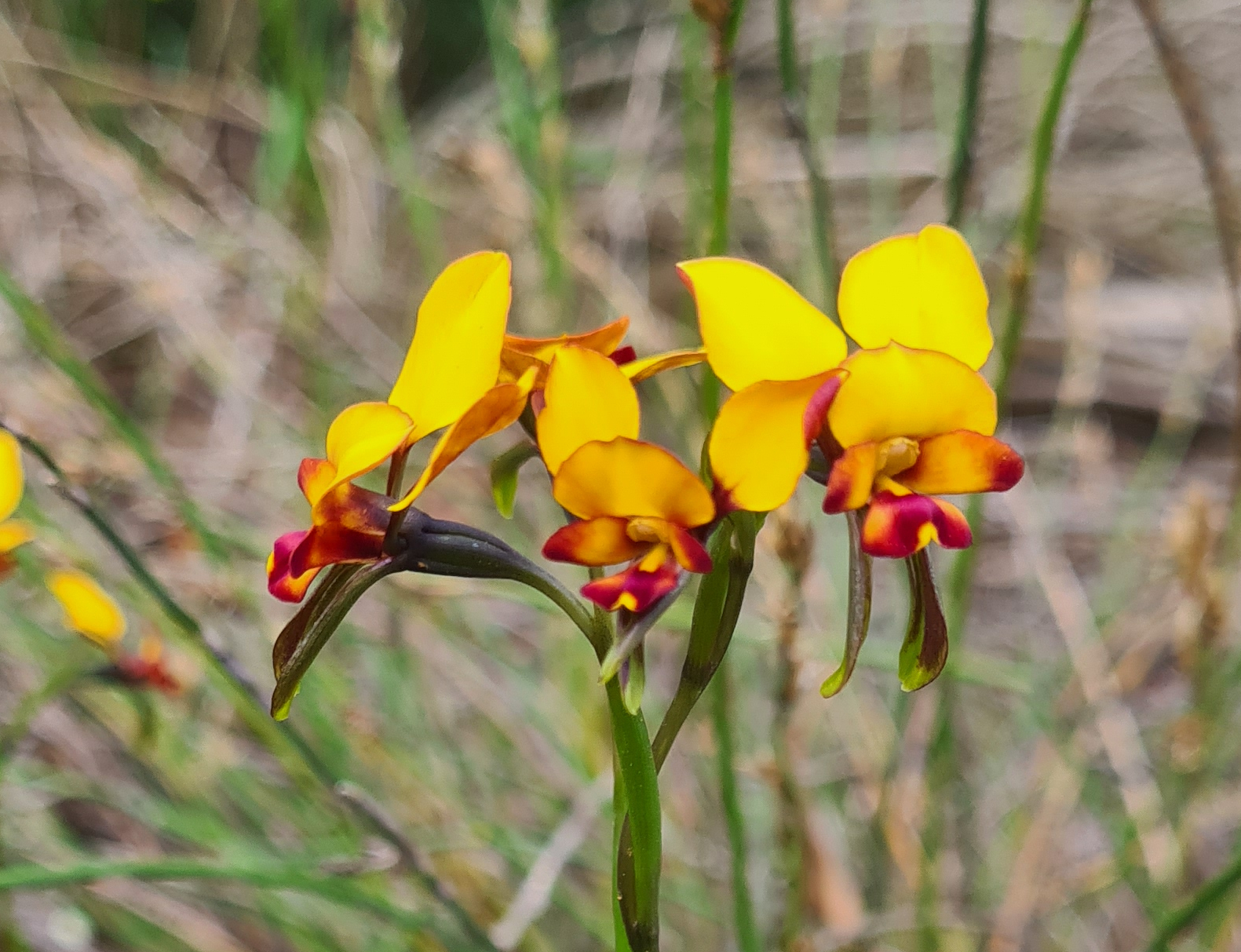

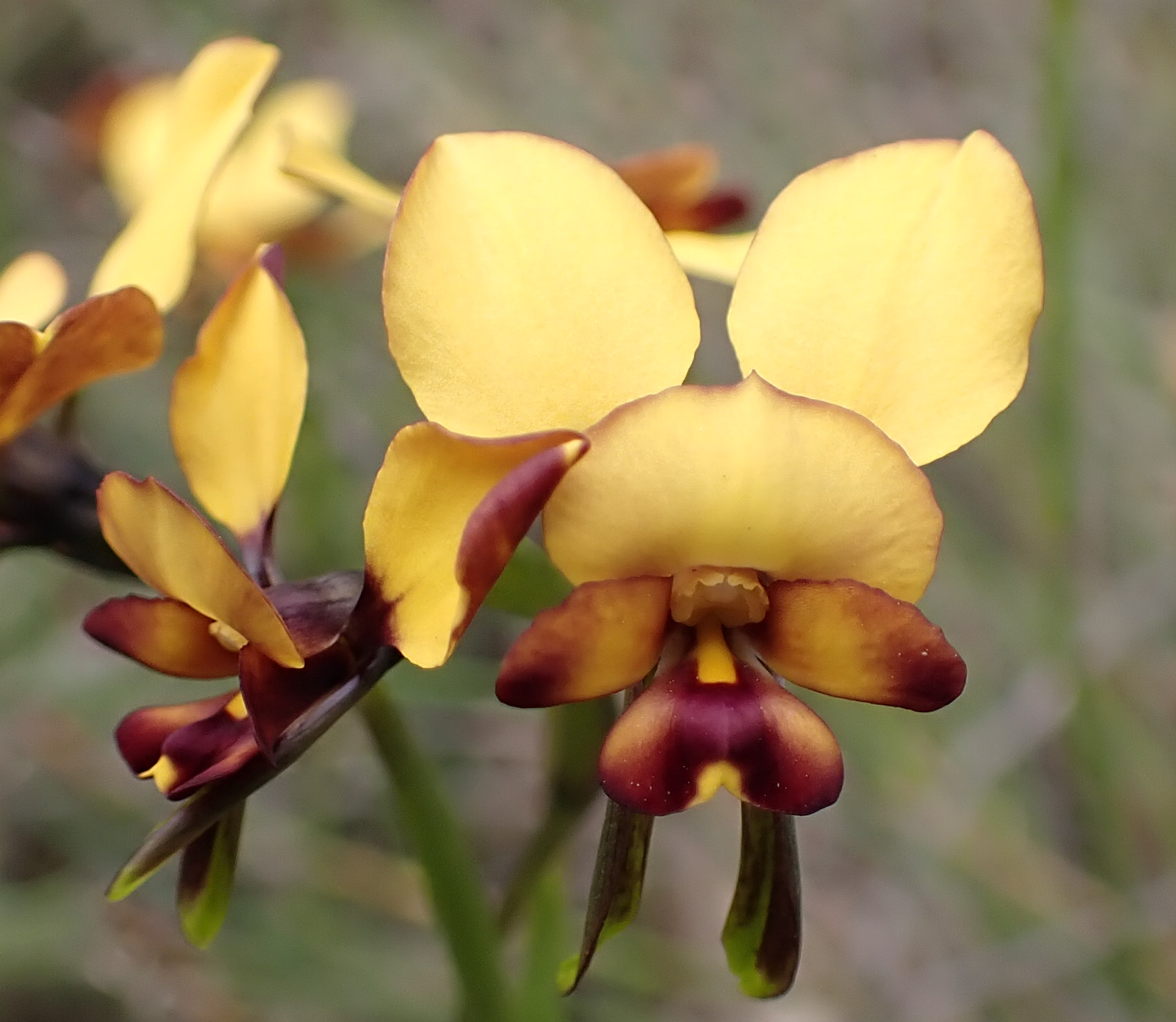
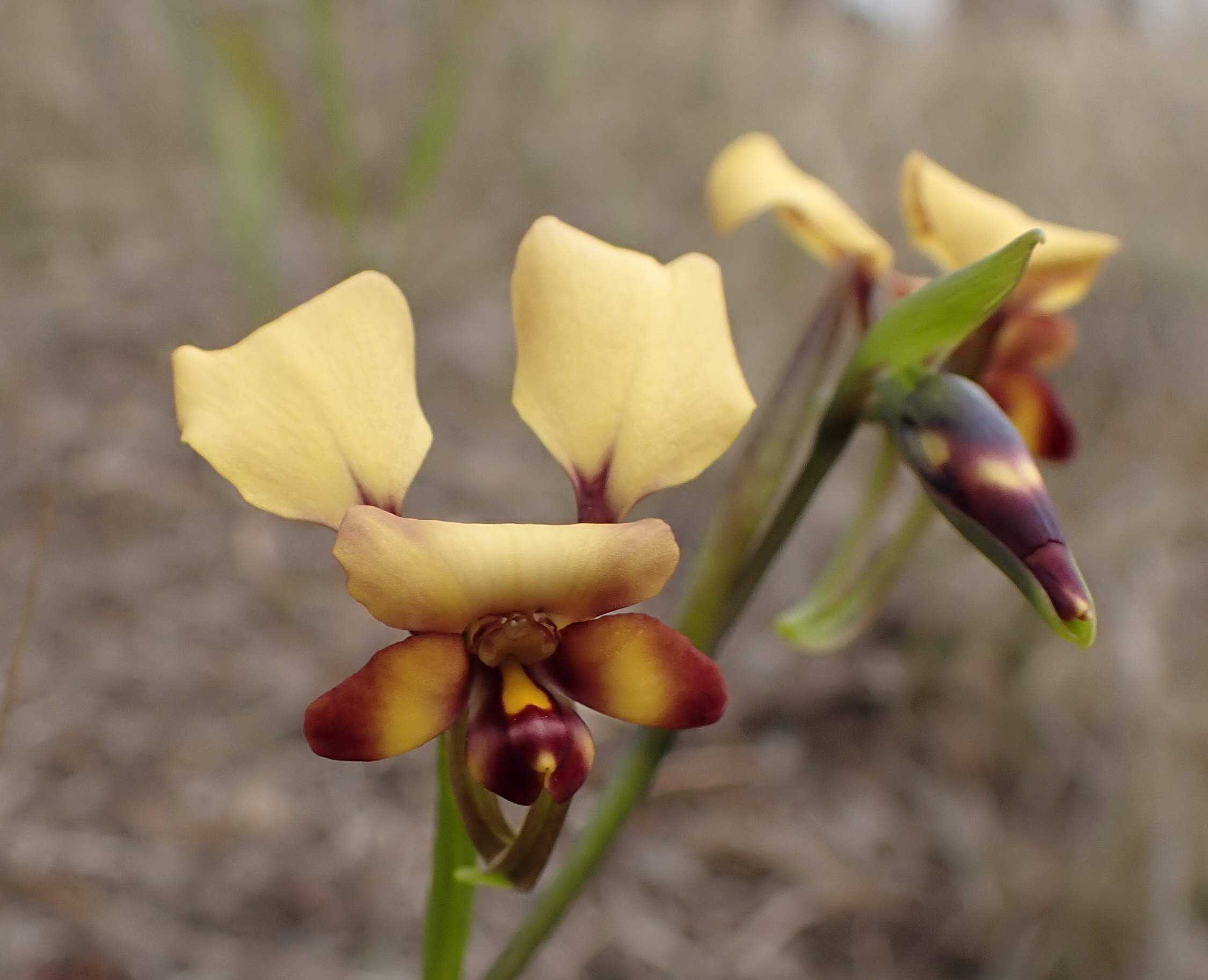
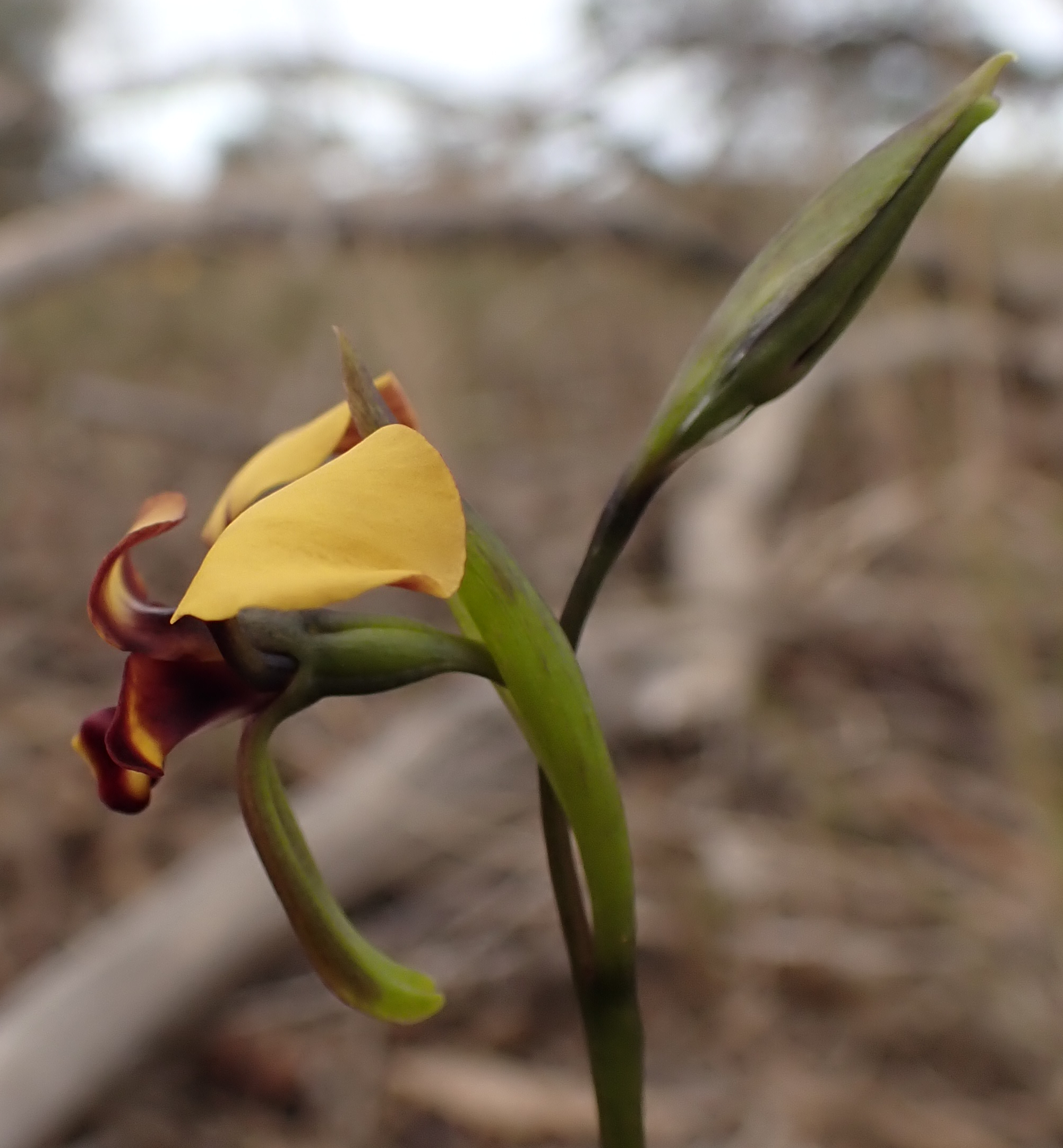
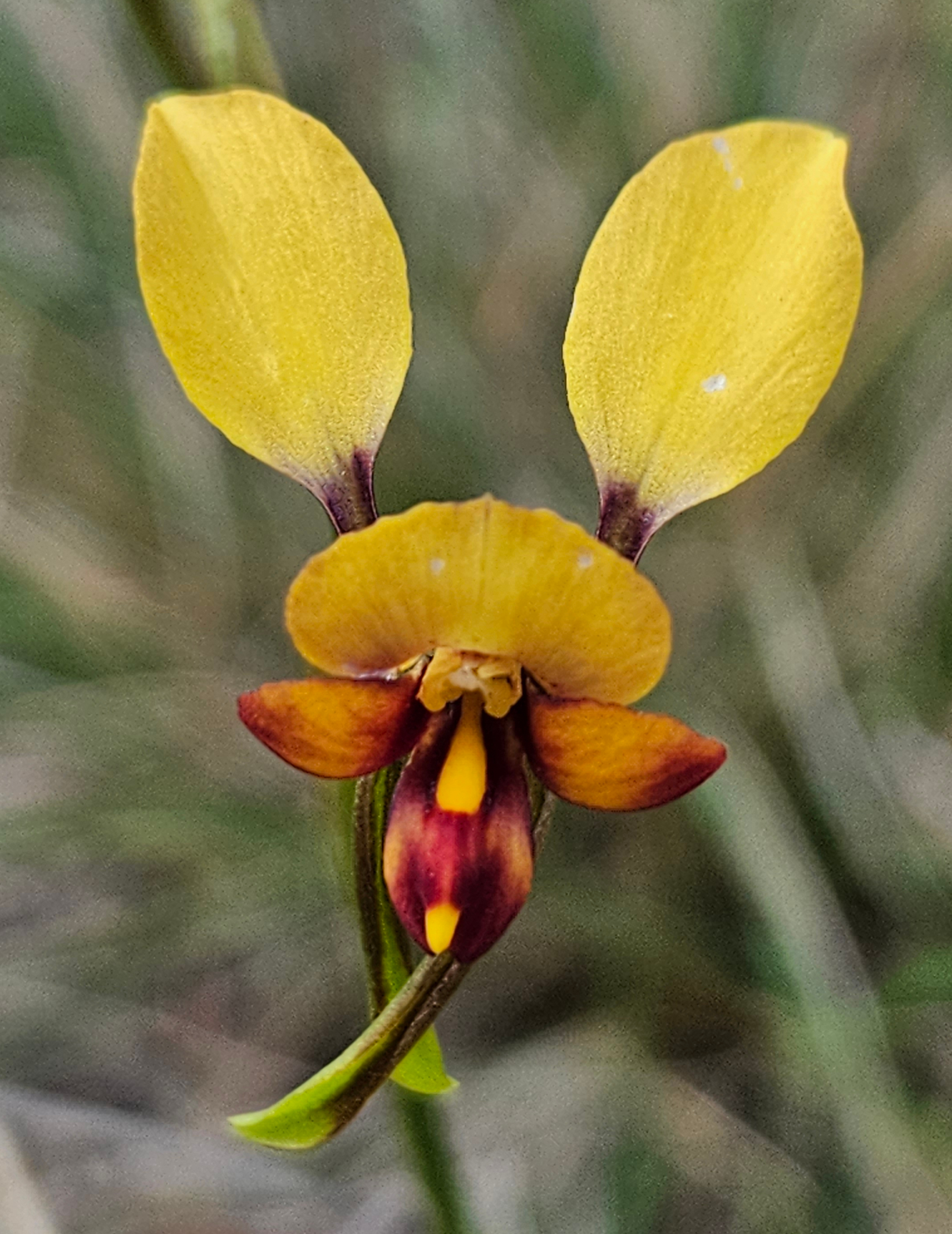
Only other orchids found here were further greenhoods and snails. The greenhoods are darker in colour so again may be either P. sanguinea or P. arbuscula. Please assist in the ID if you can.
The snails though appear to be the Hairy-stemmed snail orchid (Pterostylis setulosa) a common inland species, which is extremely variable in appearance.

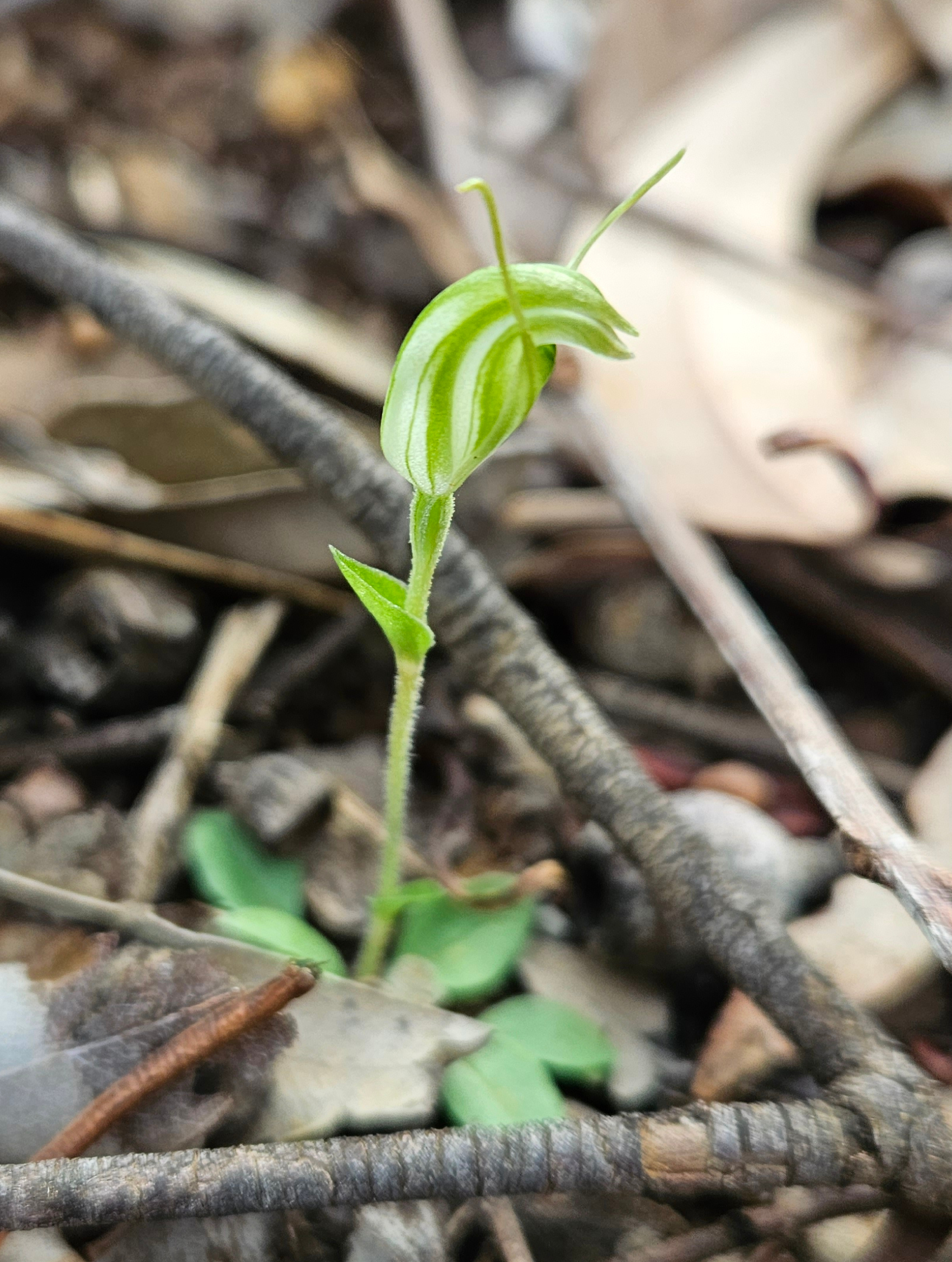


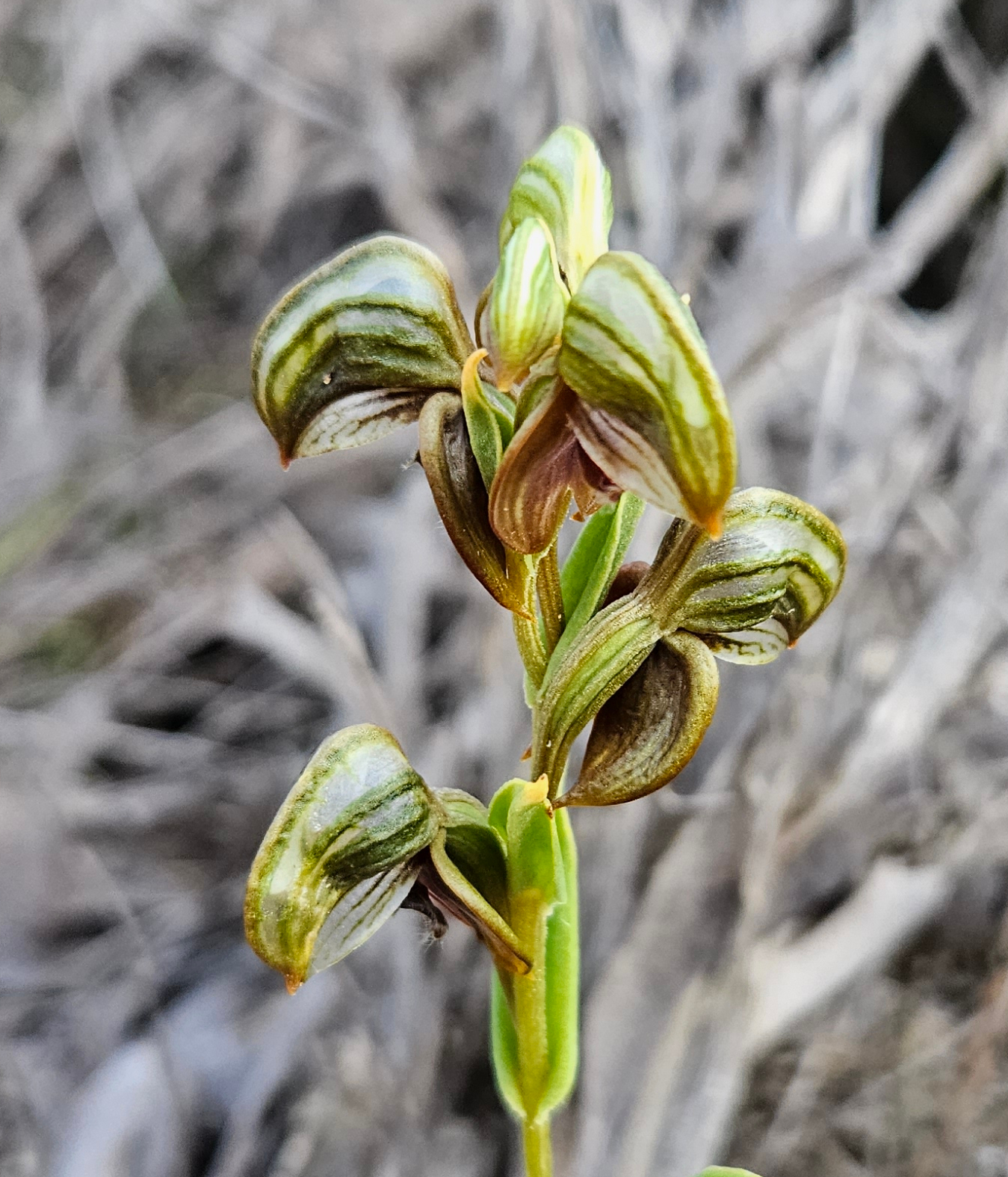


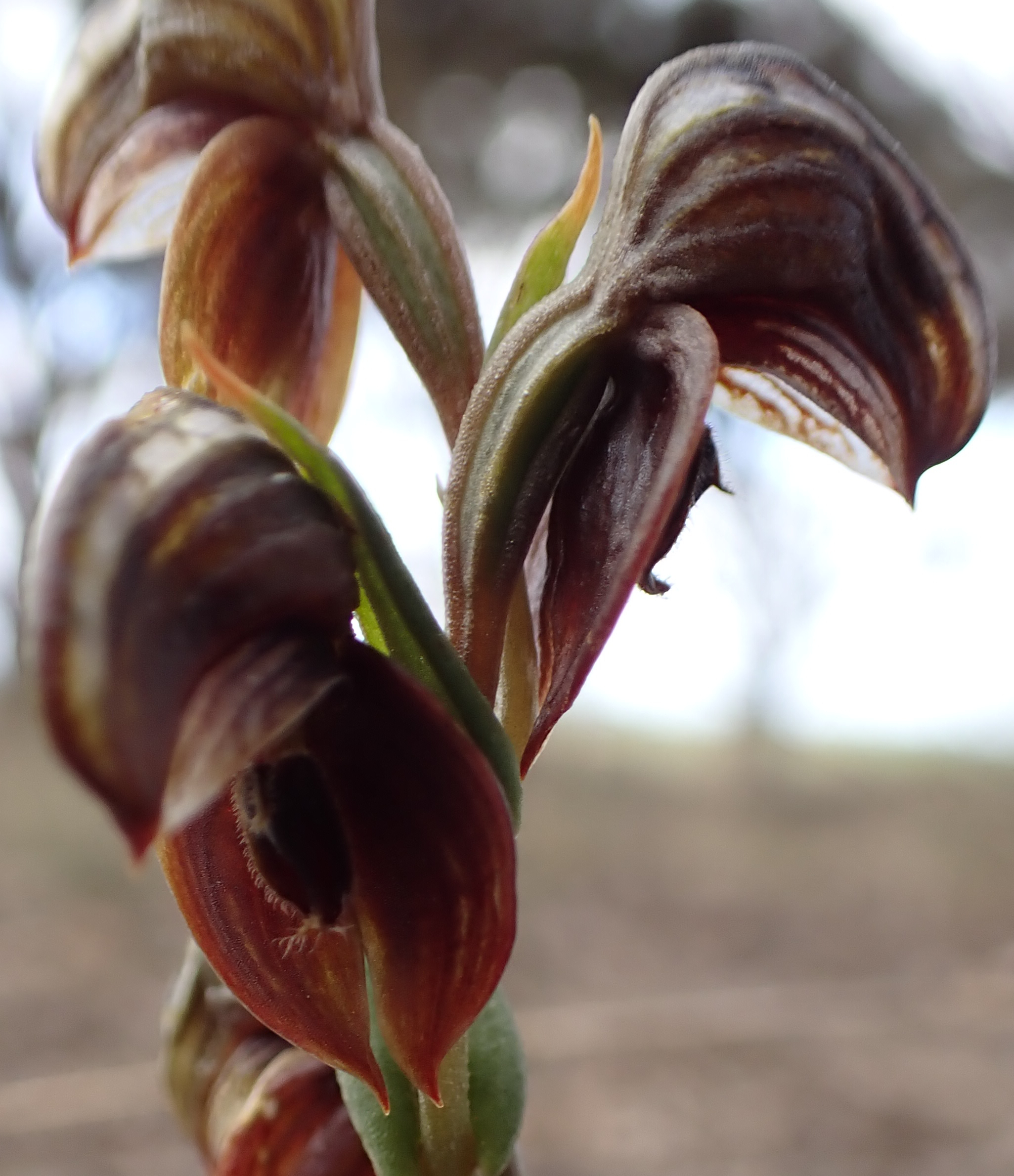




From here we head into Munglinup townsite where I check out a vacant block while Deb fills up the Triton with diesel. More donkey orchids are found, plus some Caladenia sp. leaves with one in bud. However, the exciting find was a small orchid I nearly stepped on whilst walking over to Deb, who had driven down to pick me up.
A lone tiny Pink bunny orchid (Eriochilus scaber subsp. scaber) was found. This was surprising as this spot had not been recently burnt and over previous visits they had not been found.
These small orchids only grow to a maximum height of 150mm; however, this specimen would have been only 30mm. Nearby a patch of 5 in flower was found with one in particular being a much stronger pink in colour. It would have been great to explore a bit more, but it is nearly 4pm so onwards we go.





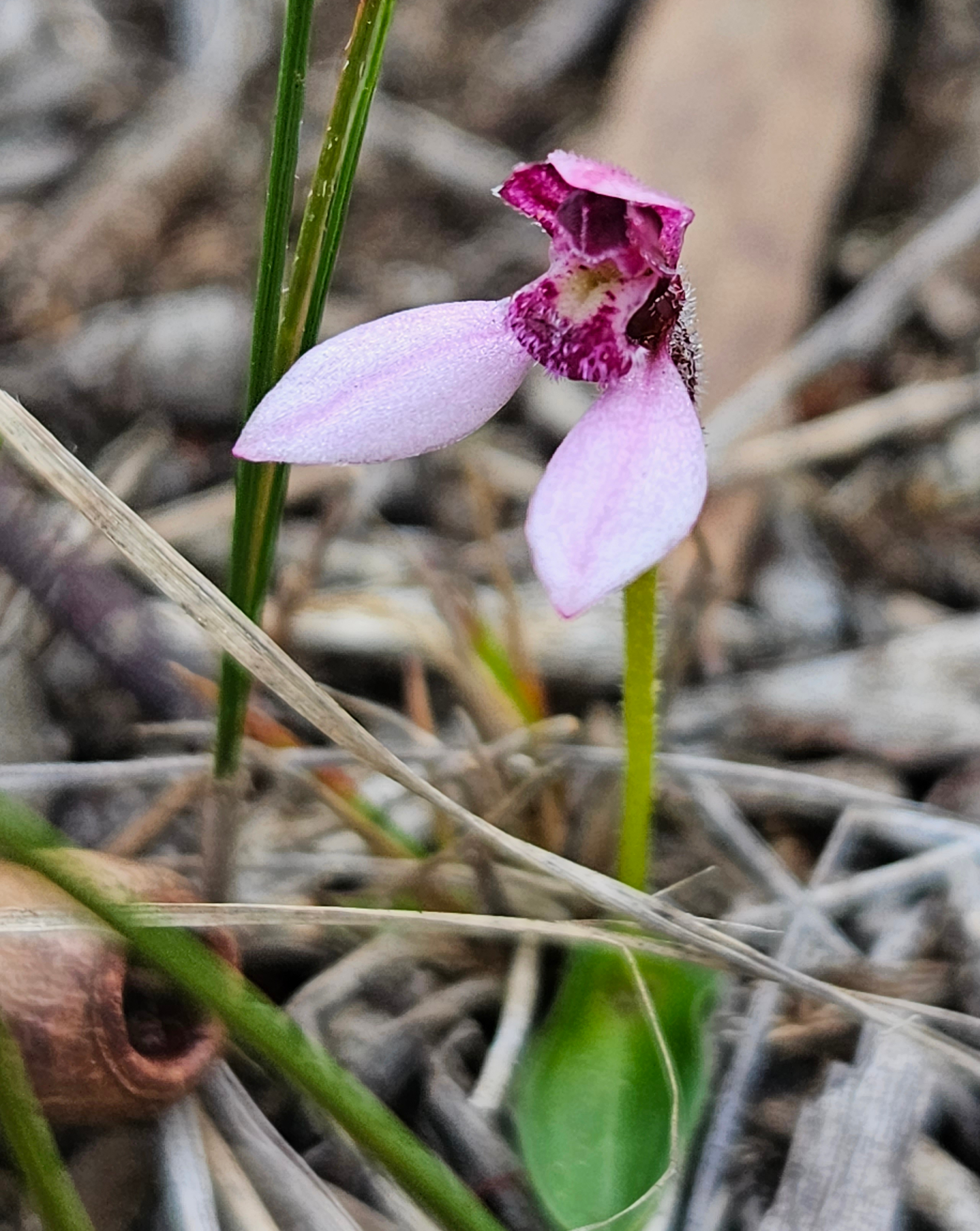
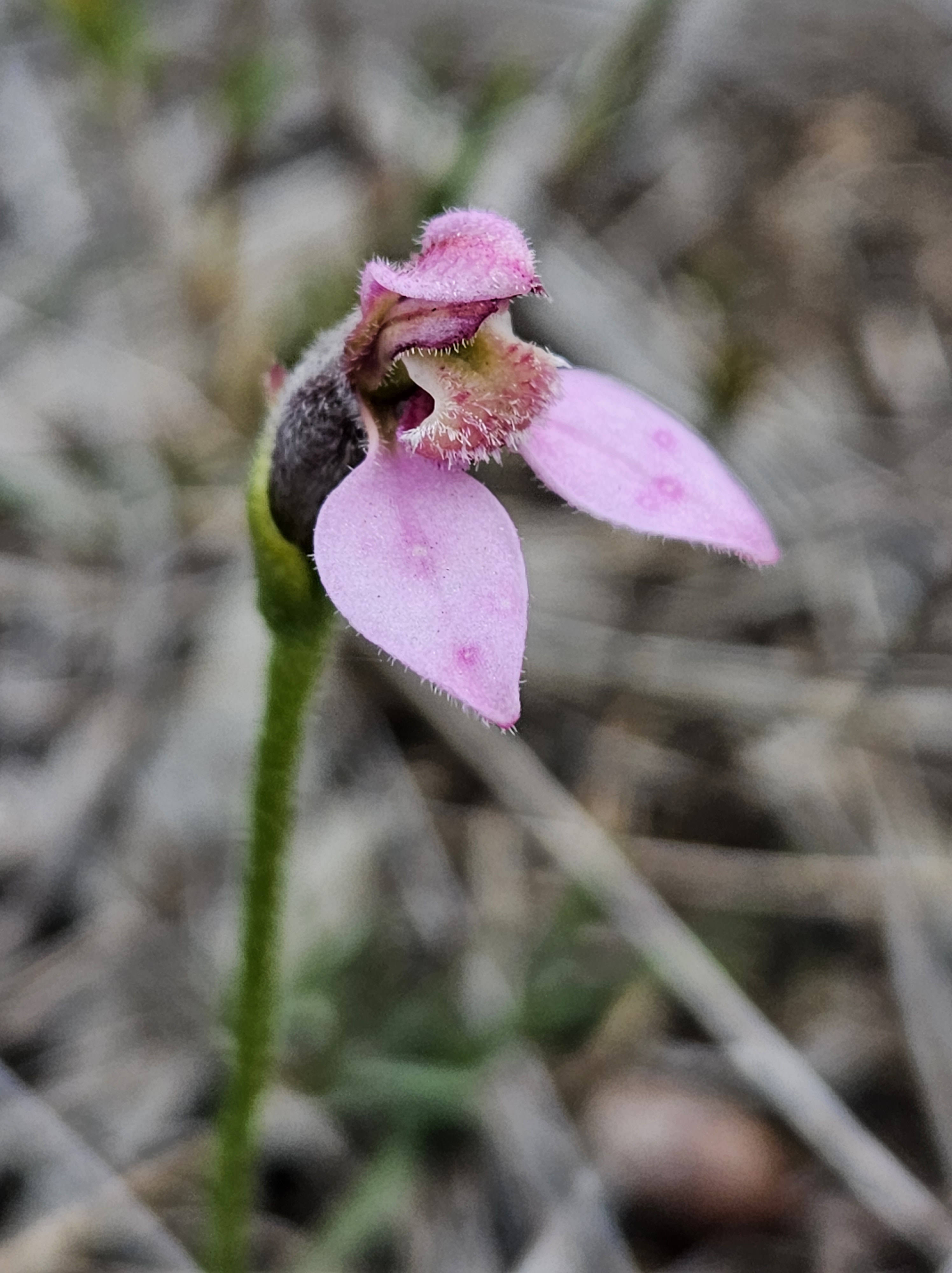



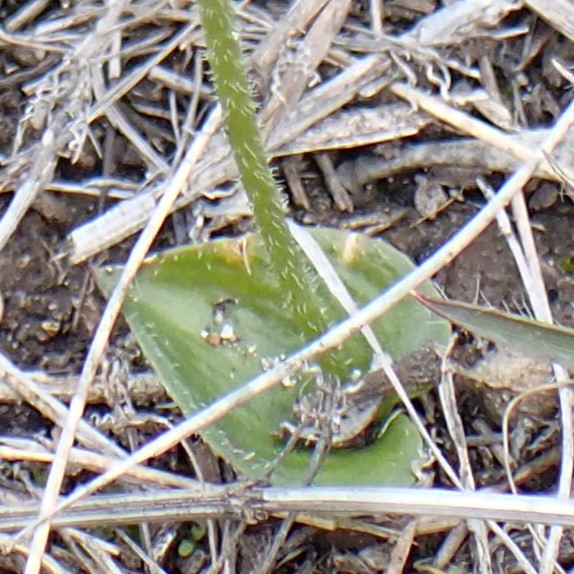
From Munglinup we travel east to Coomalbidgup where we check out a burnt-out area. We are knocked over by the patches of Pink bunny orchids found. However other than these the only other flowering orchid found was a poor but recognisable Hare orchid (Leporella fimbriata), as well as Red beaks in bud and Caladenia sp. leaves.

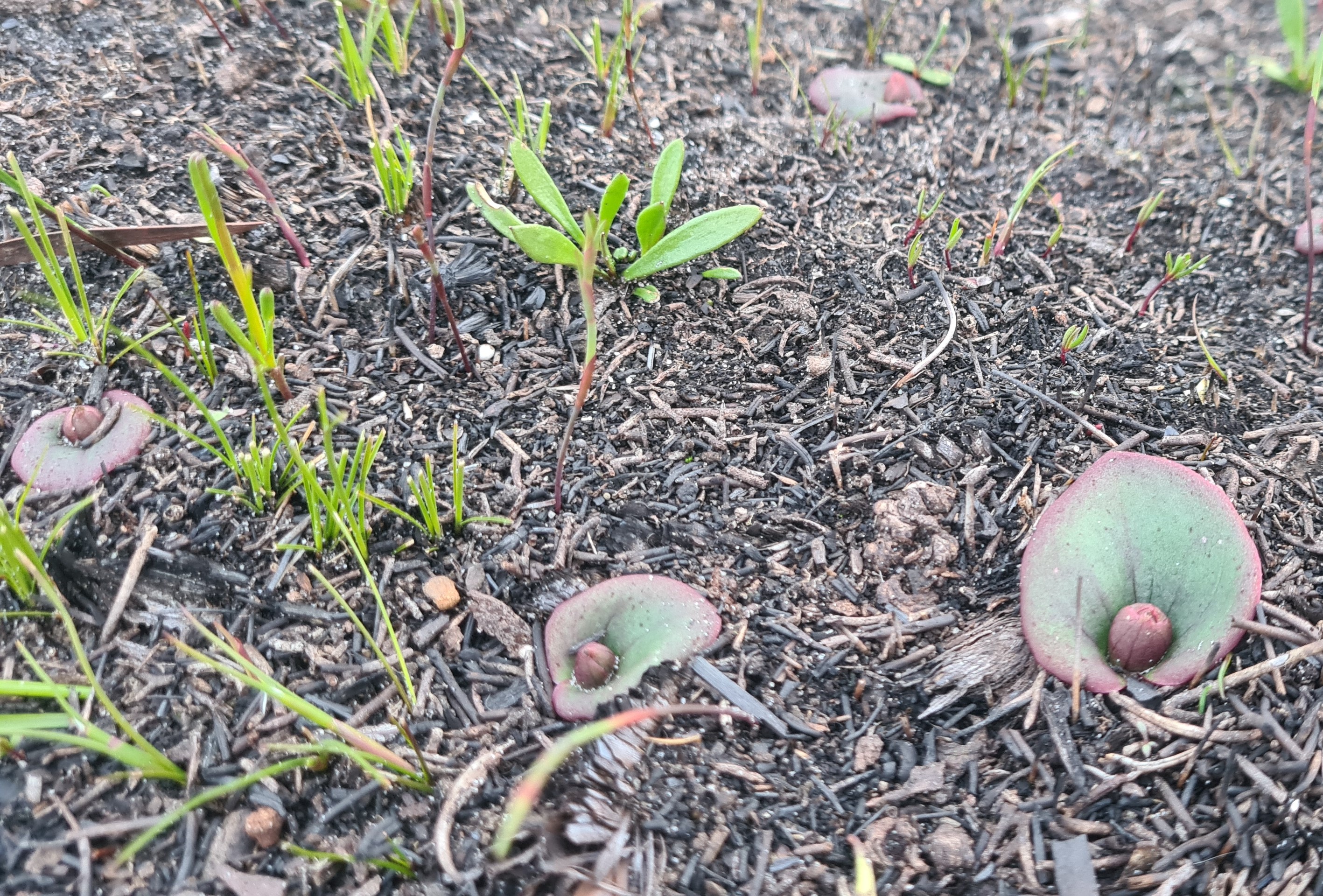

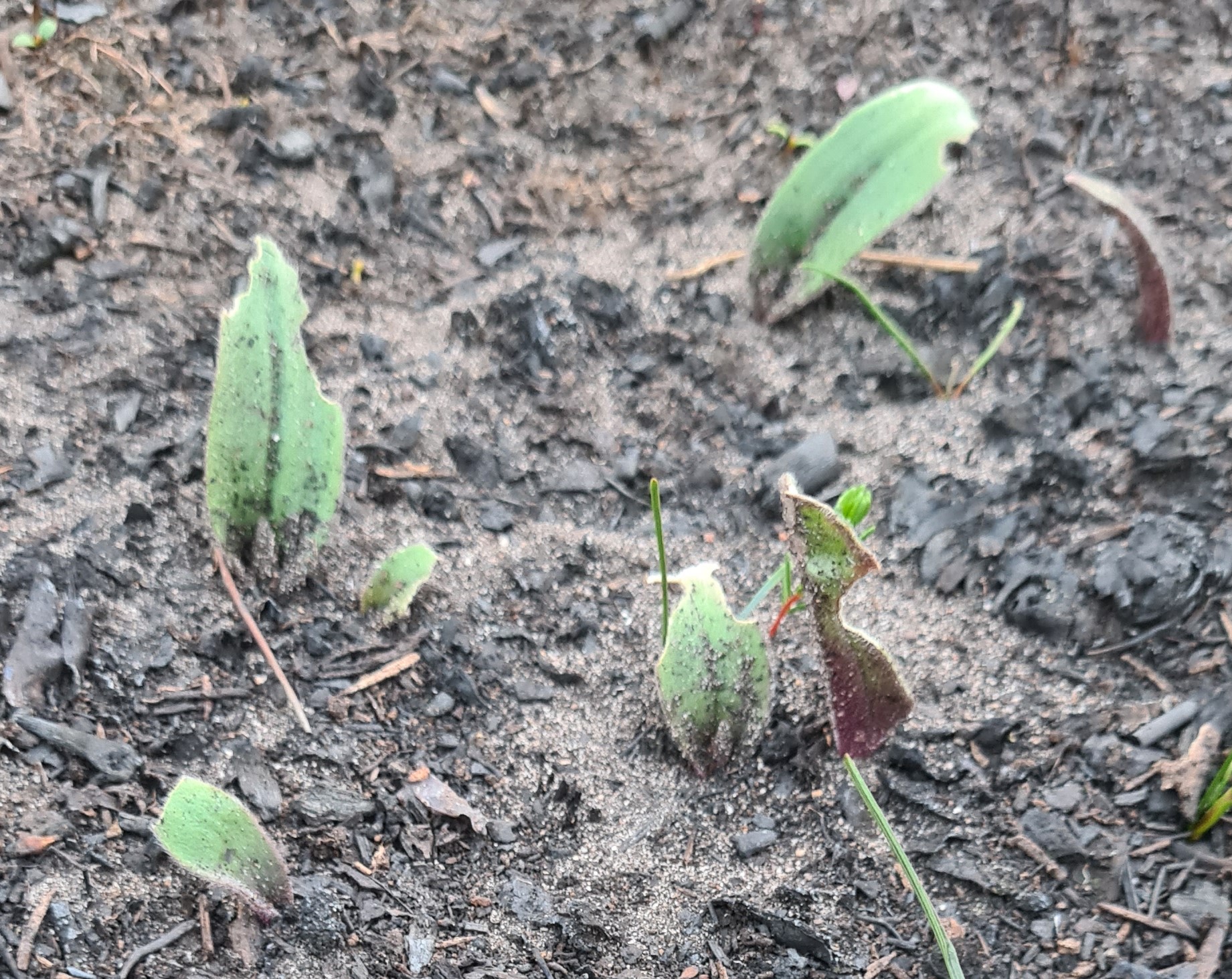
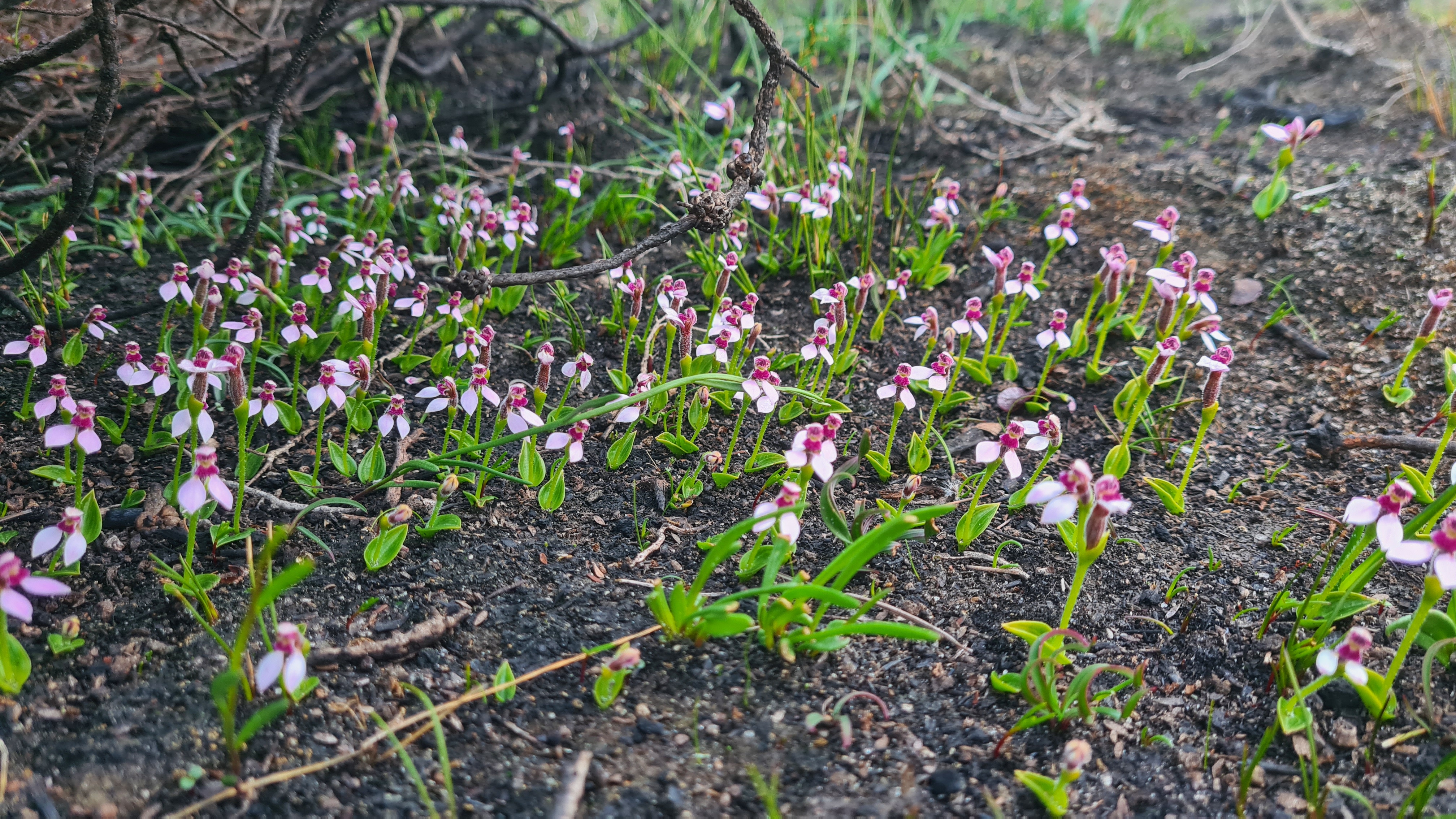





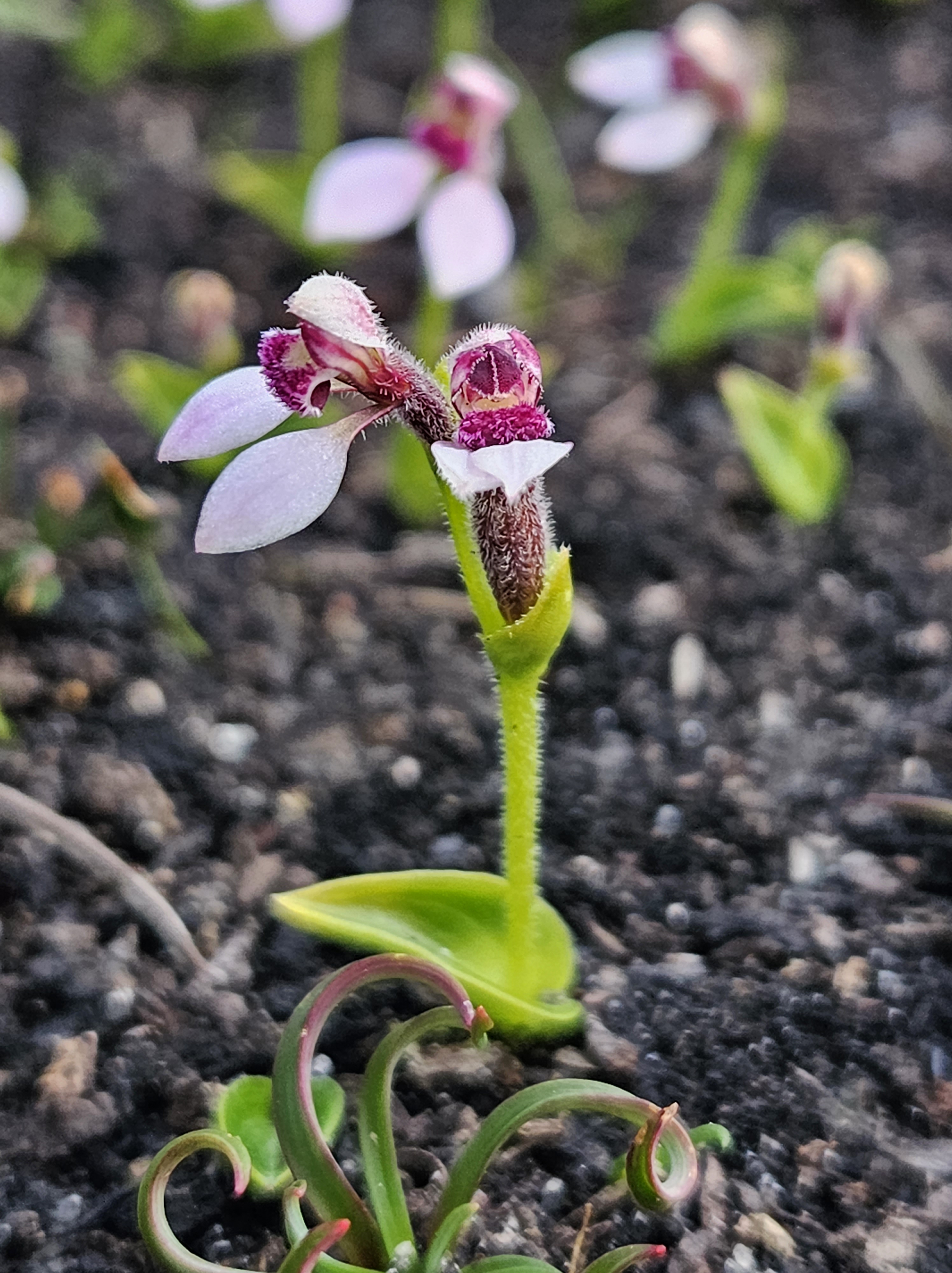
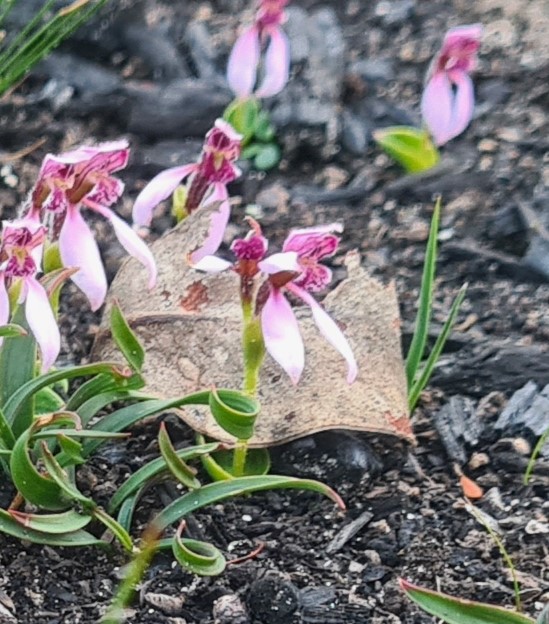
Well, we have finally reached the end of our time away and make tracks back to Esperance. Unfortunately, we did not find the elusive Queen of Sheba orchid in flower but may have found it in bud, which is exciting. It will take another trip in another season to locate a flowering specimen. The masses of Pink bunny orchids though were a definite orchid highlight of the trip. Whilst the Lights in Kings Park, revisiting The Gap in Albany and just spending a relaxing time away with my beautiful wife were the non-orchid highlights.



